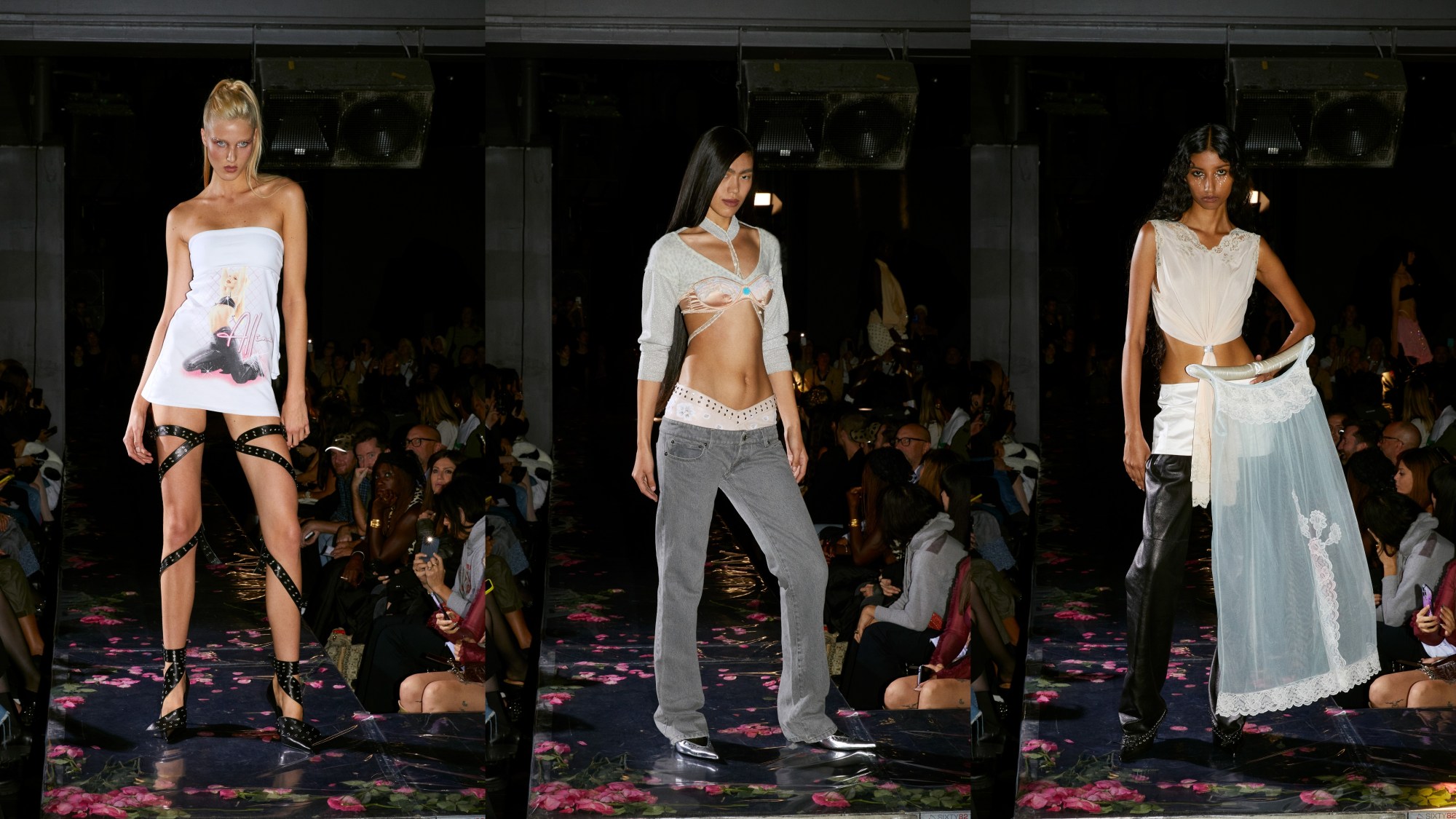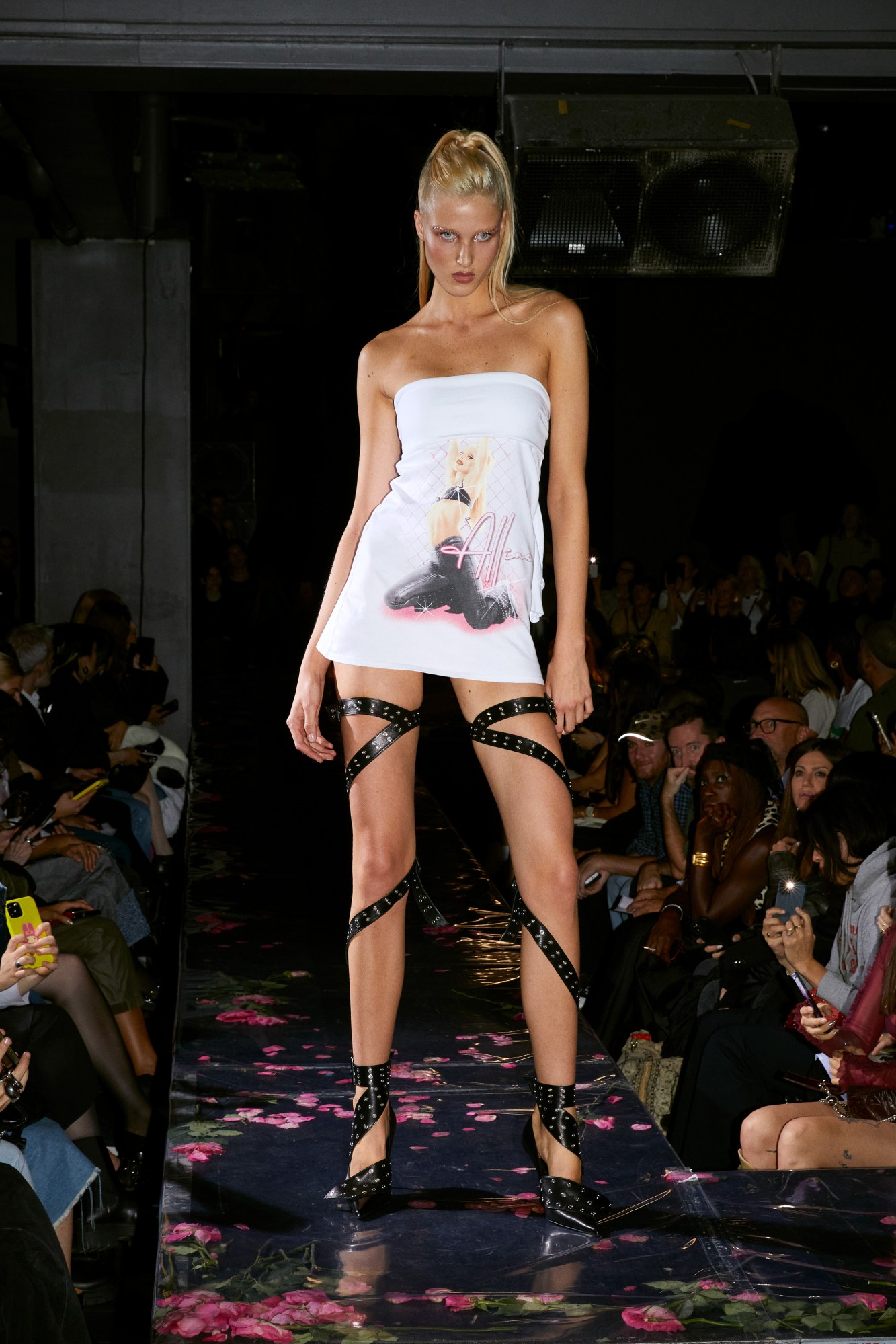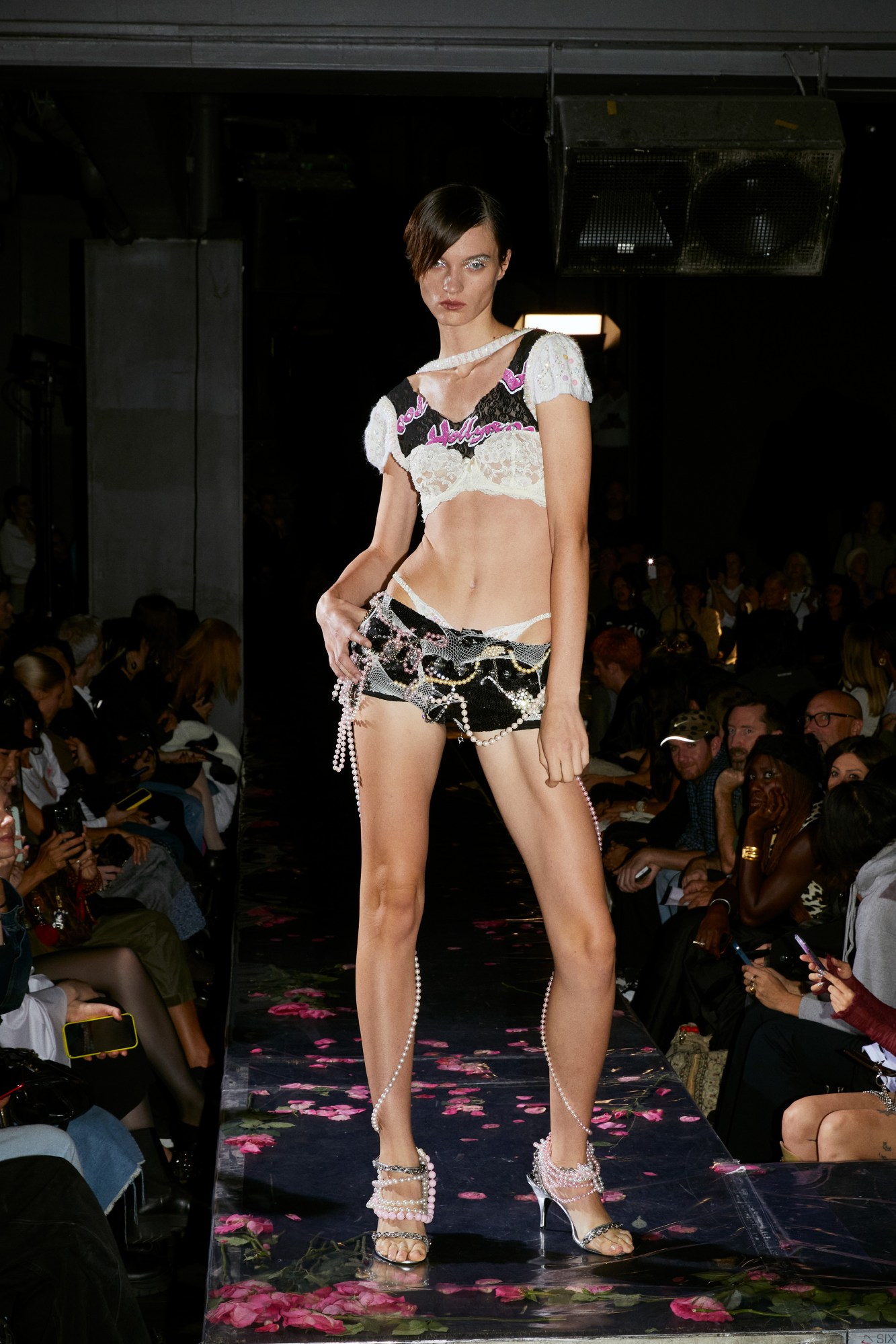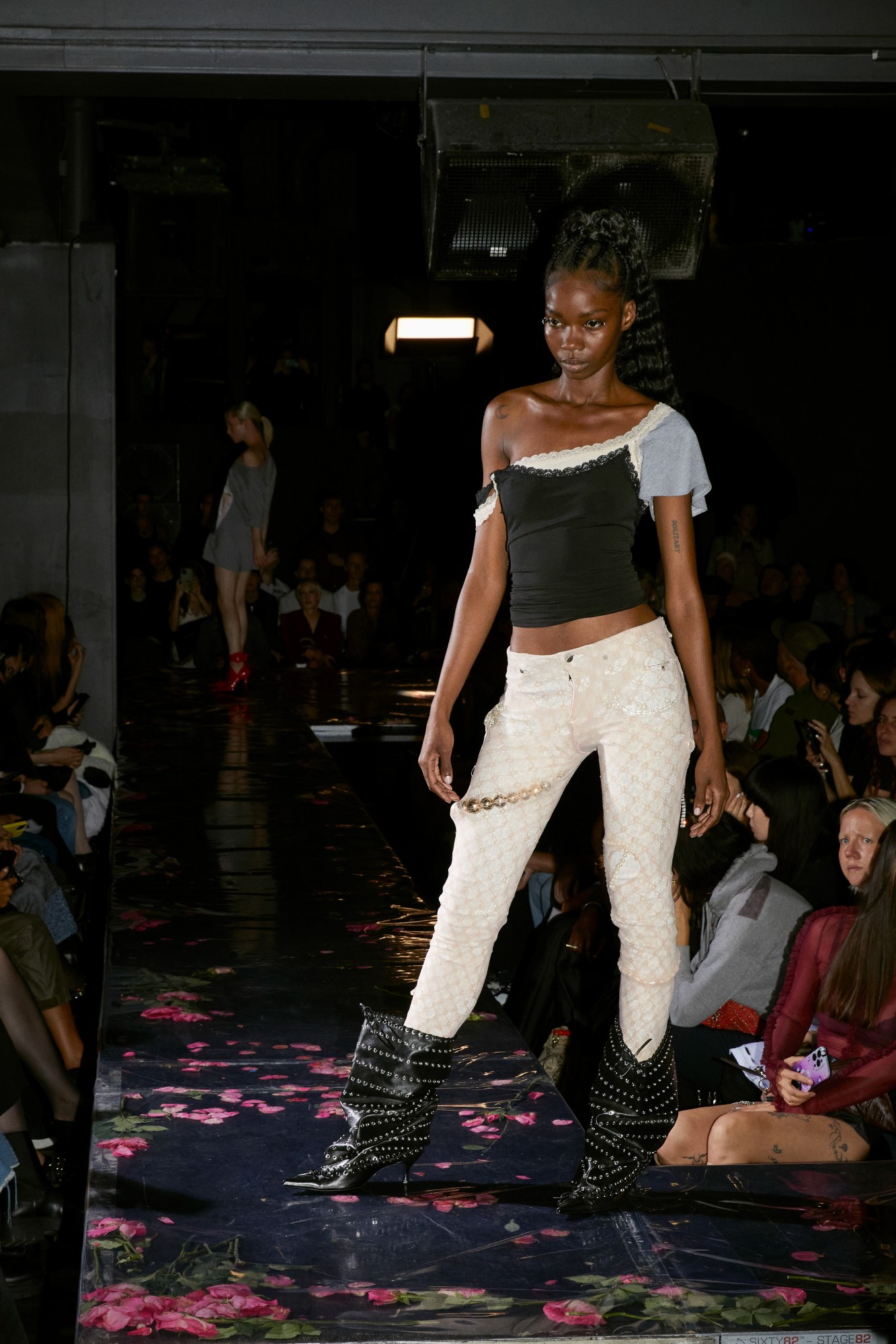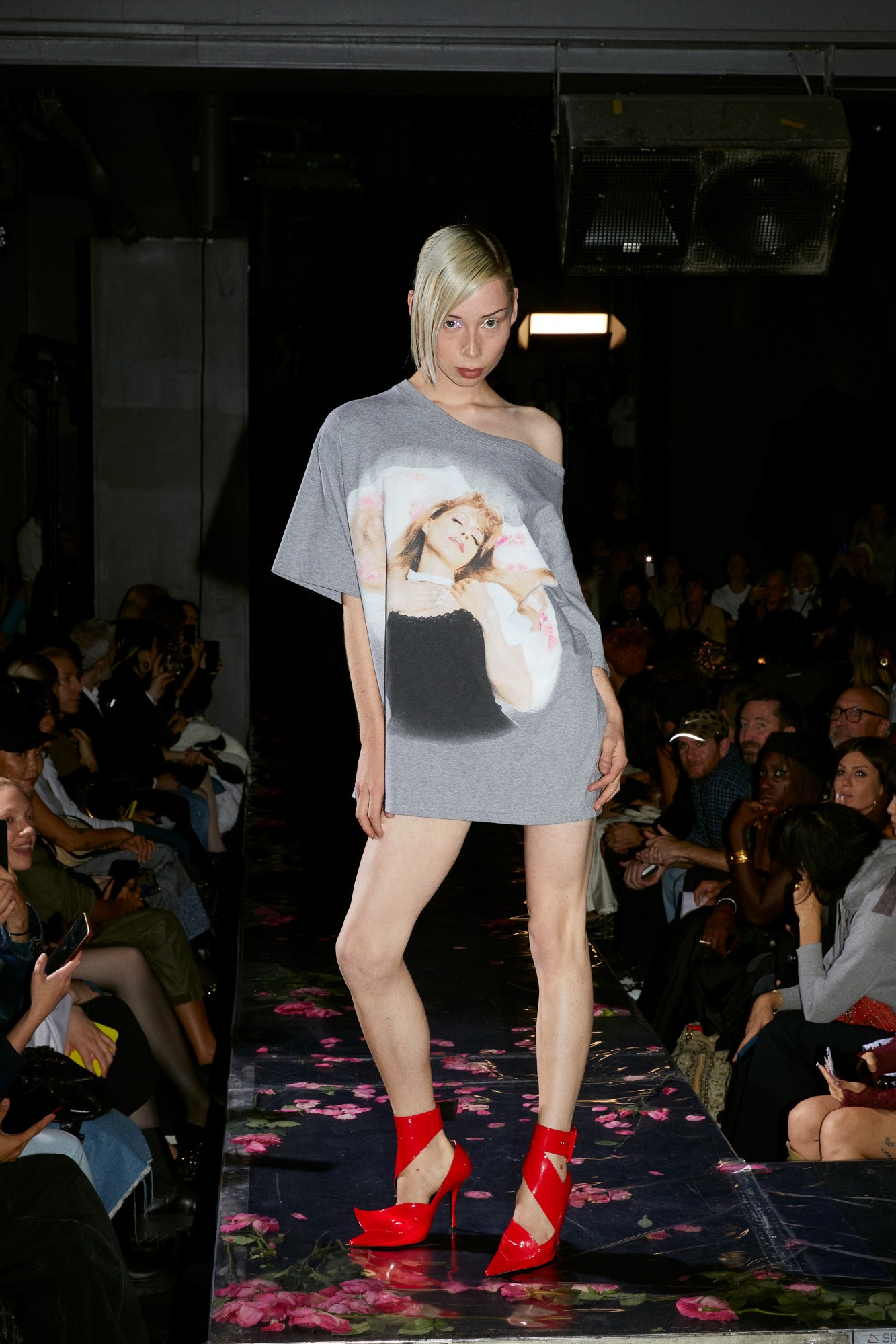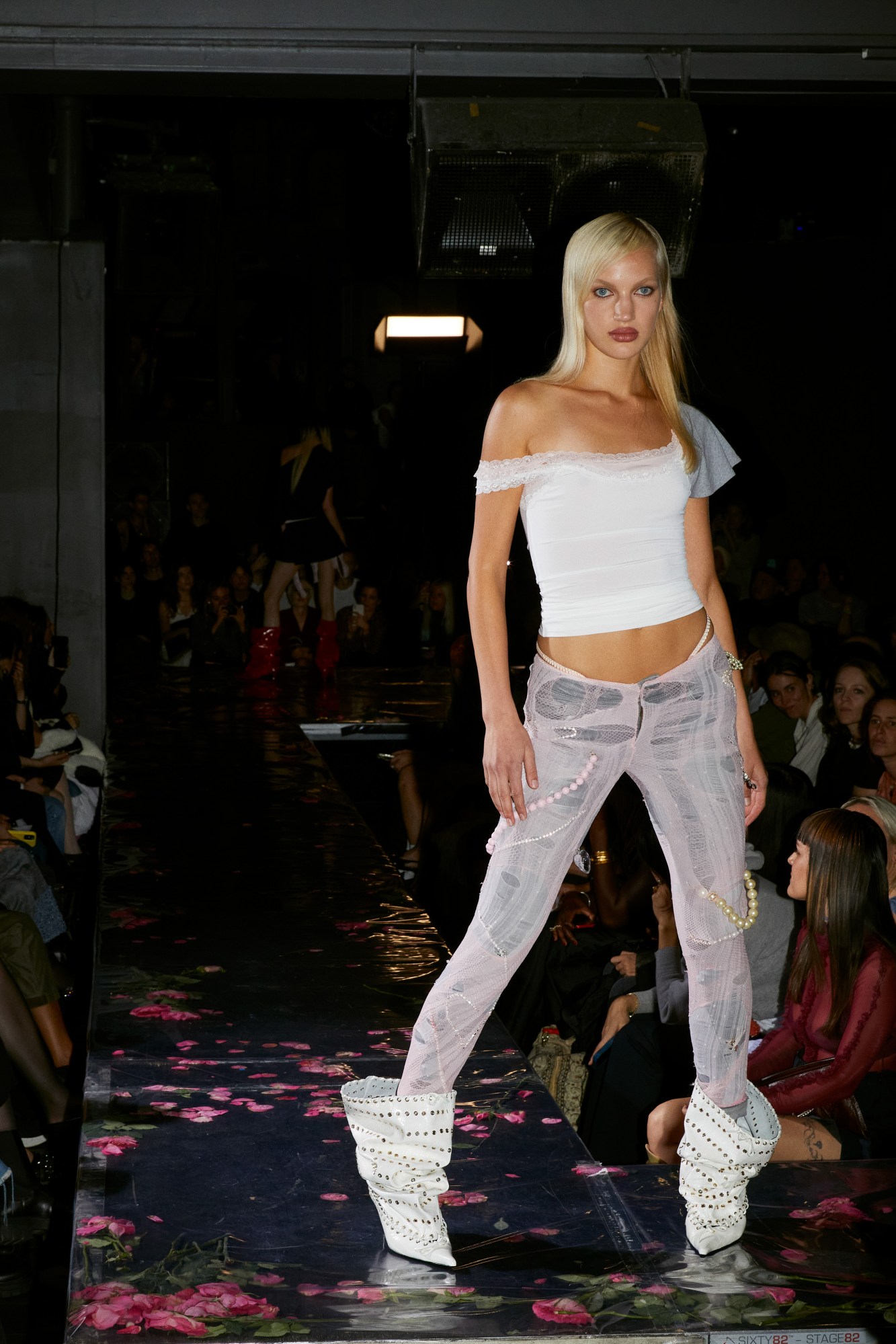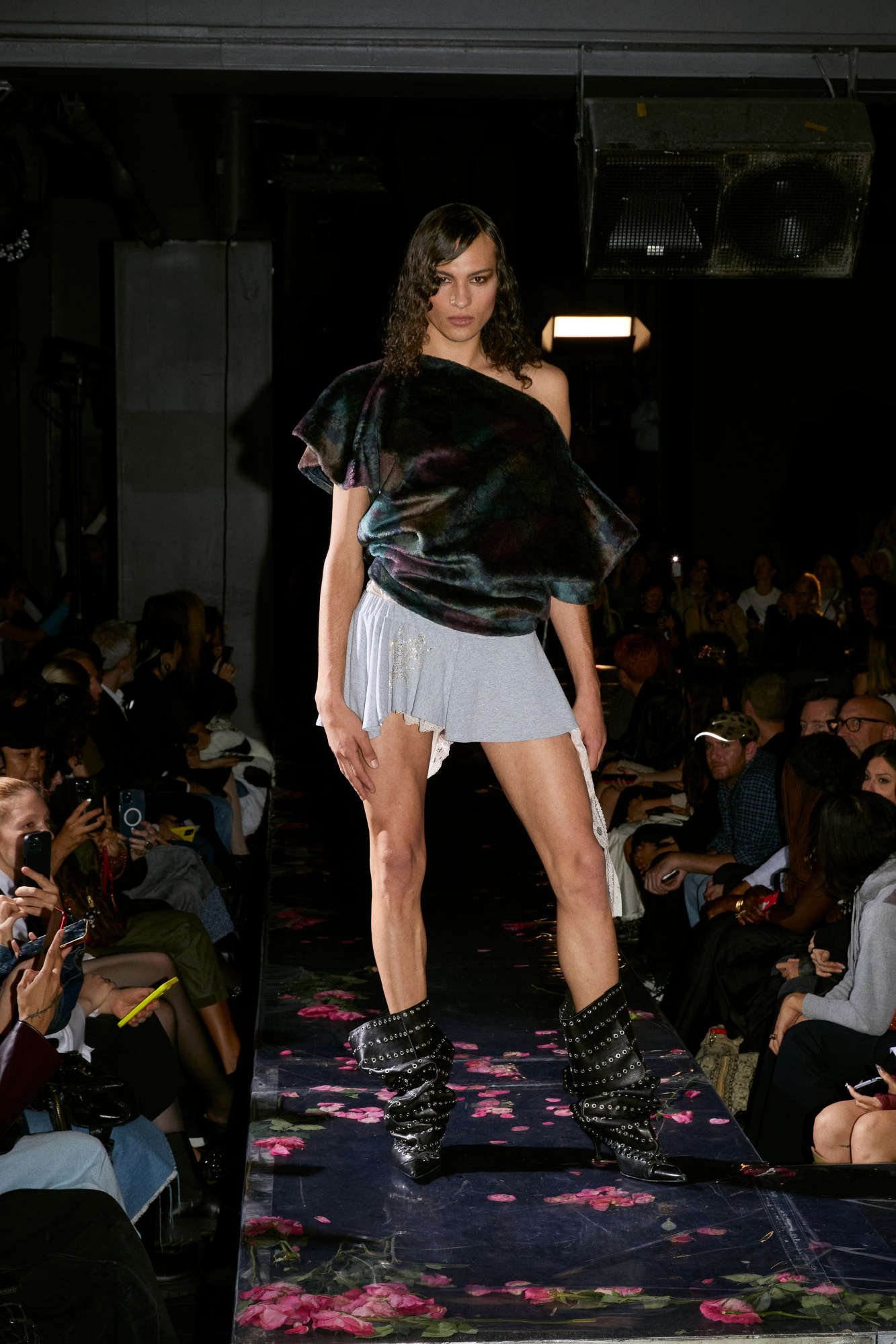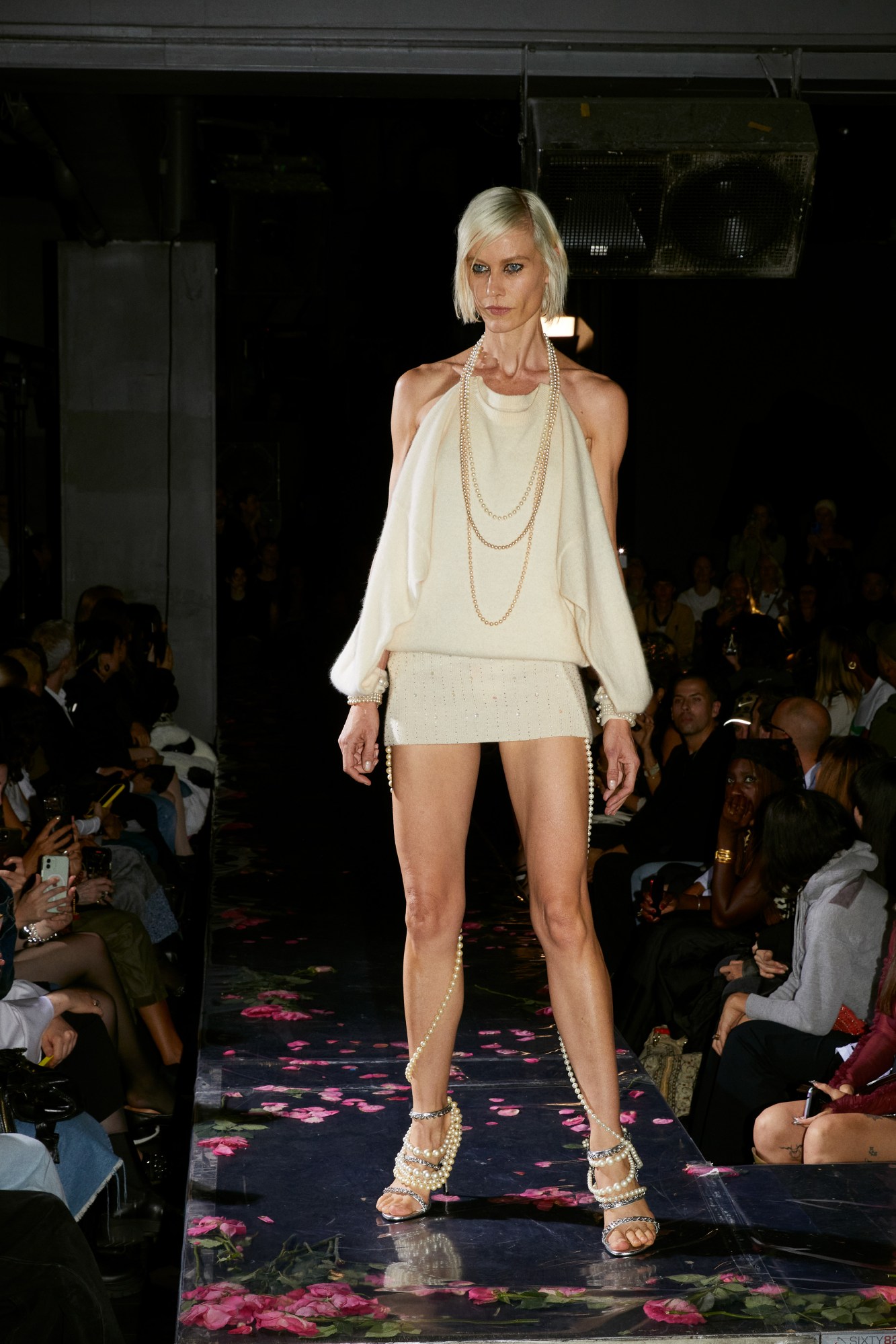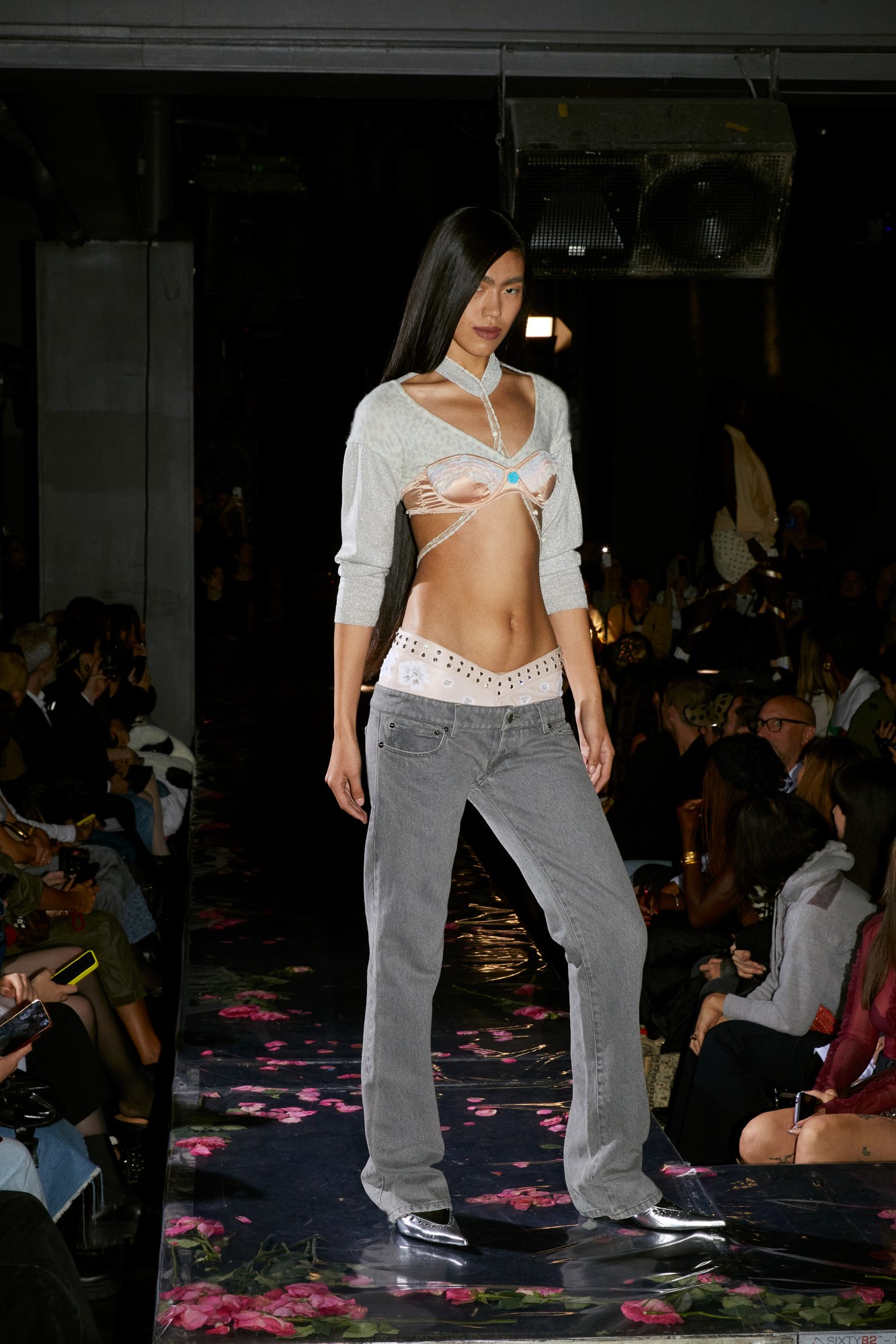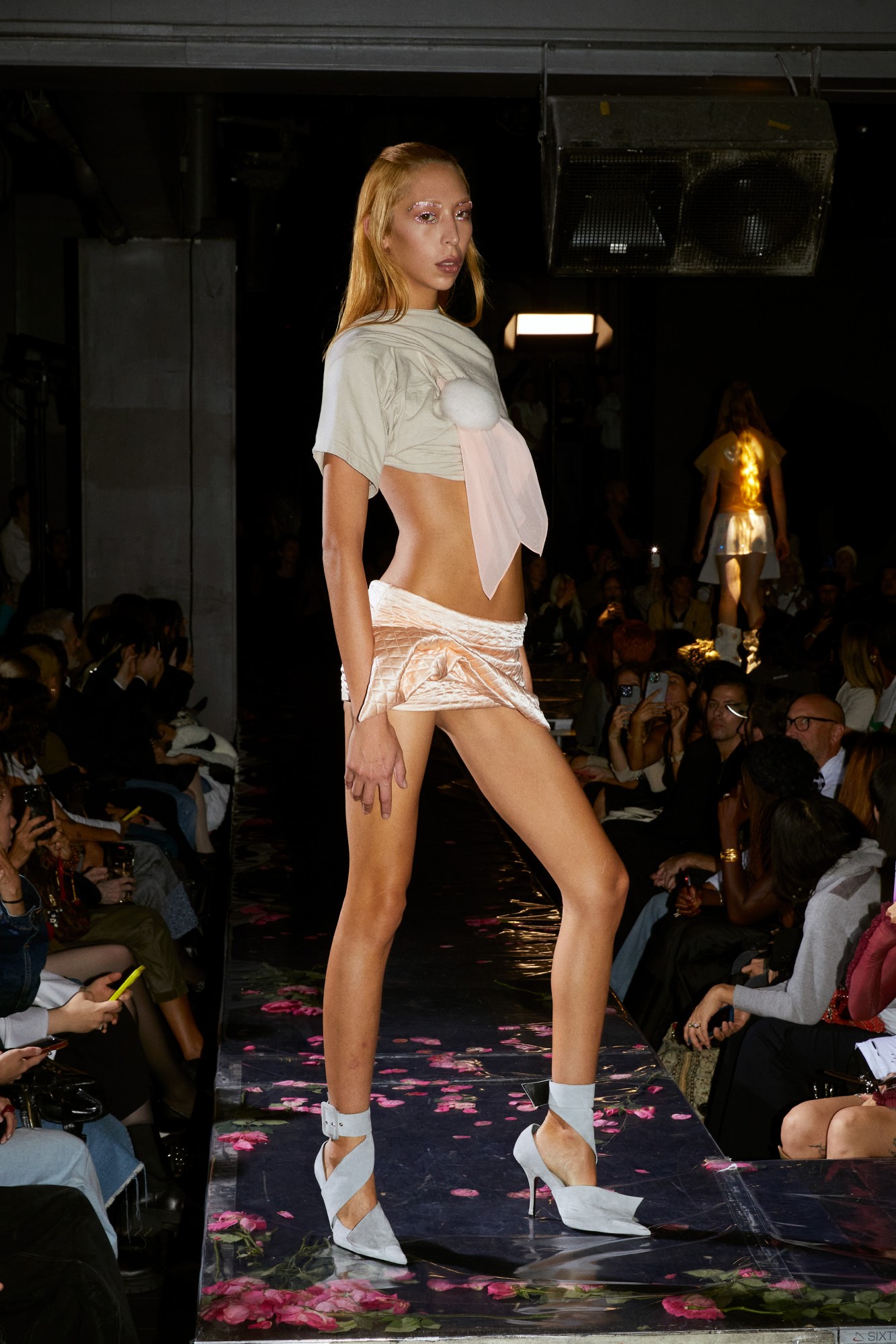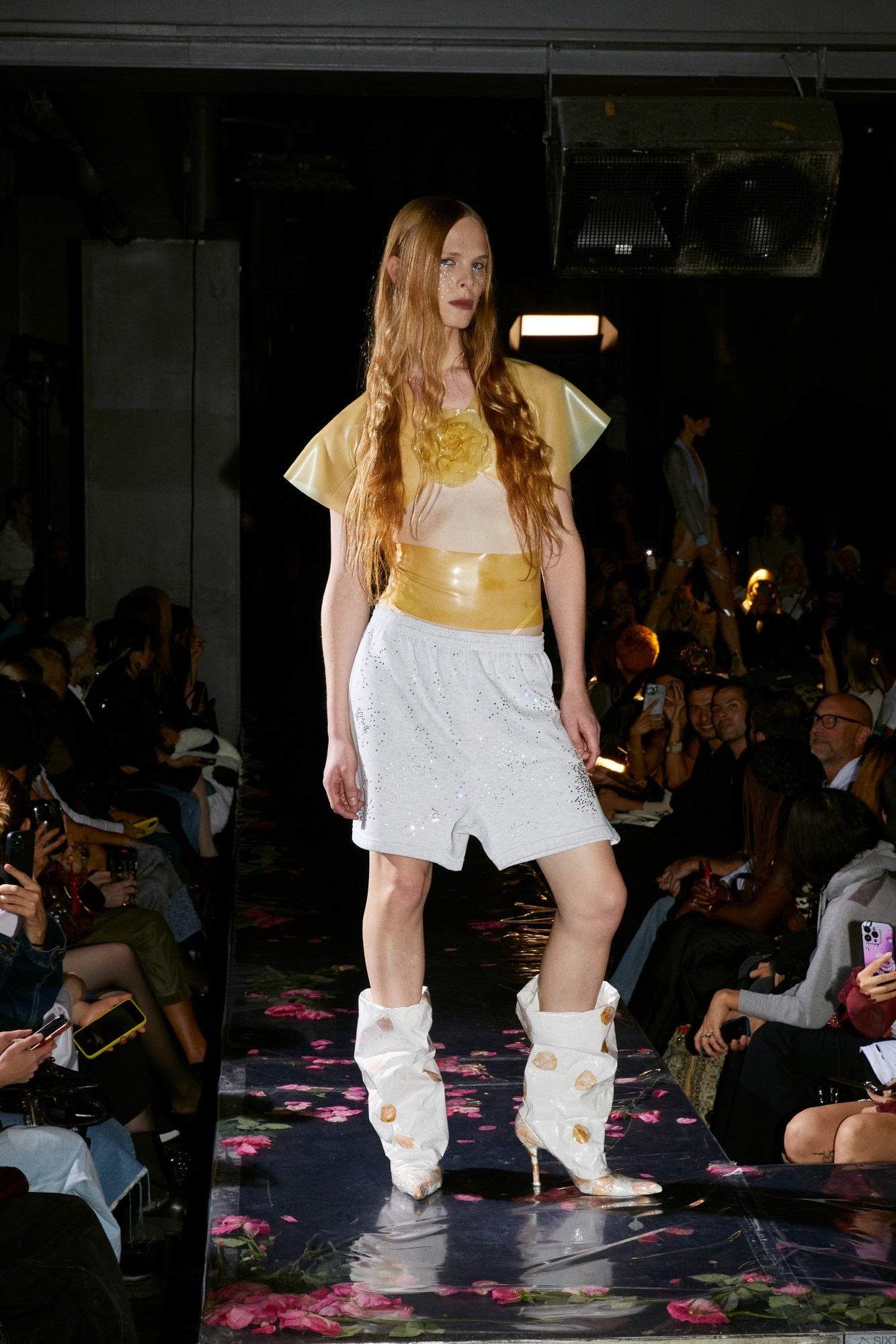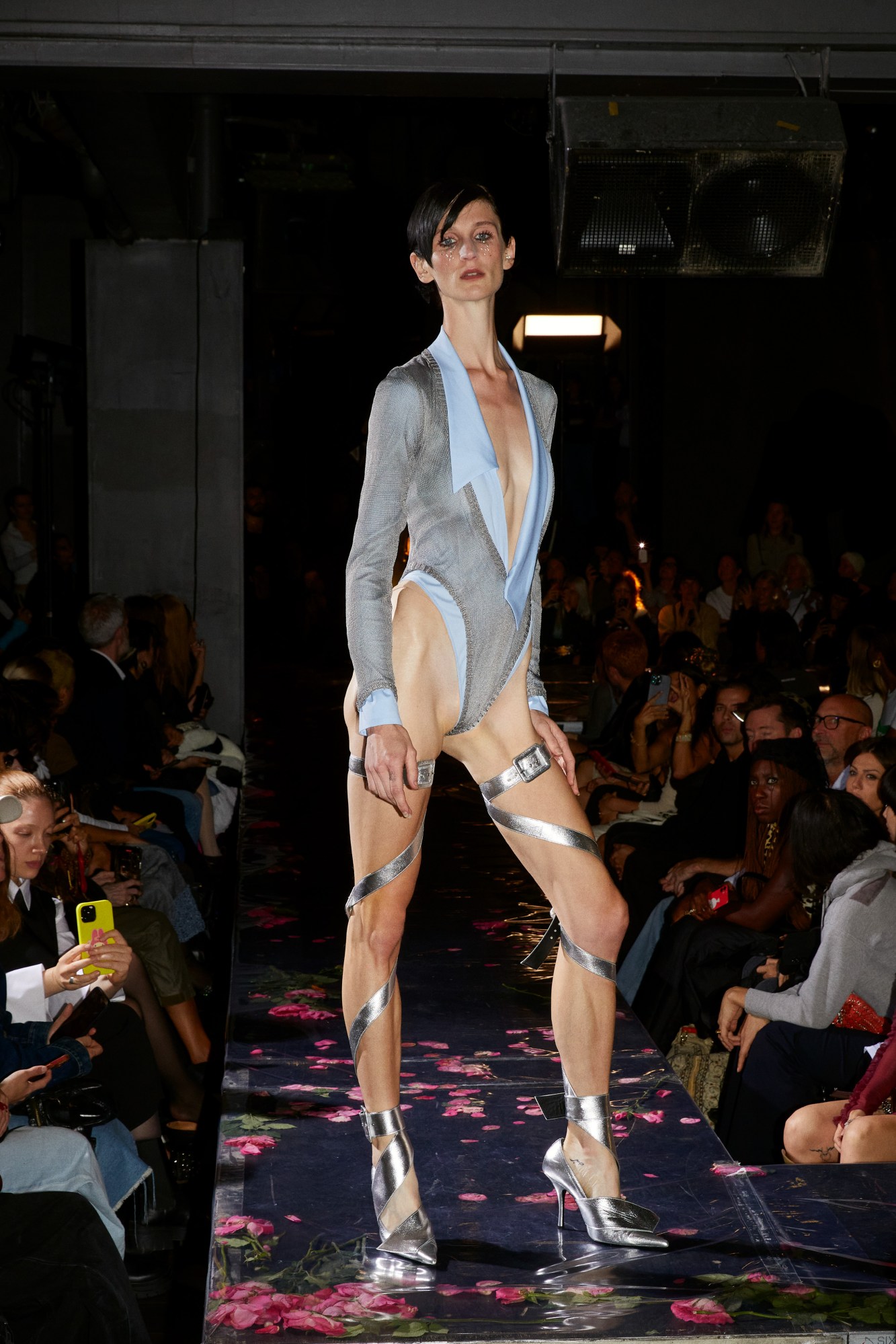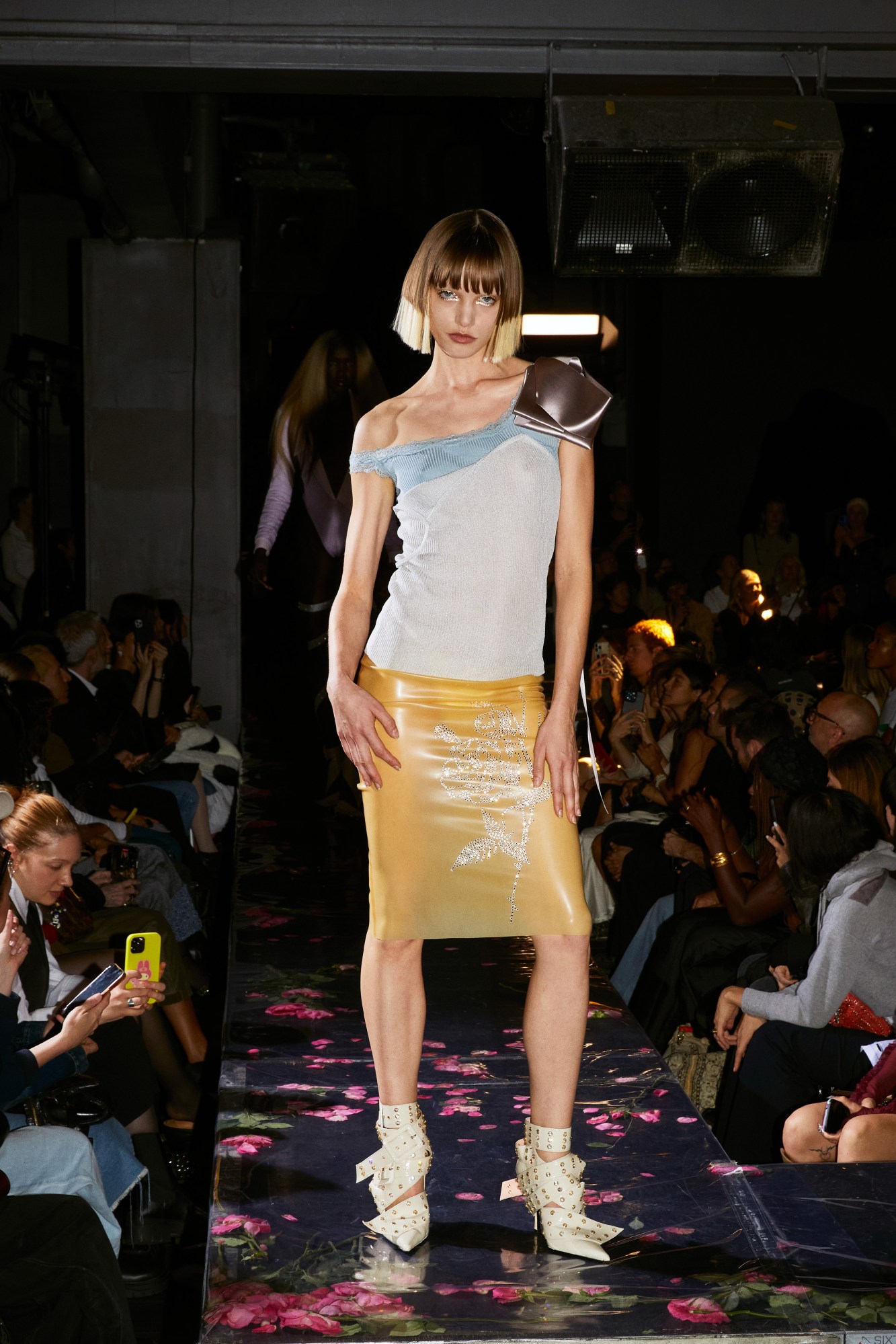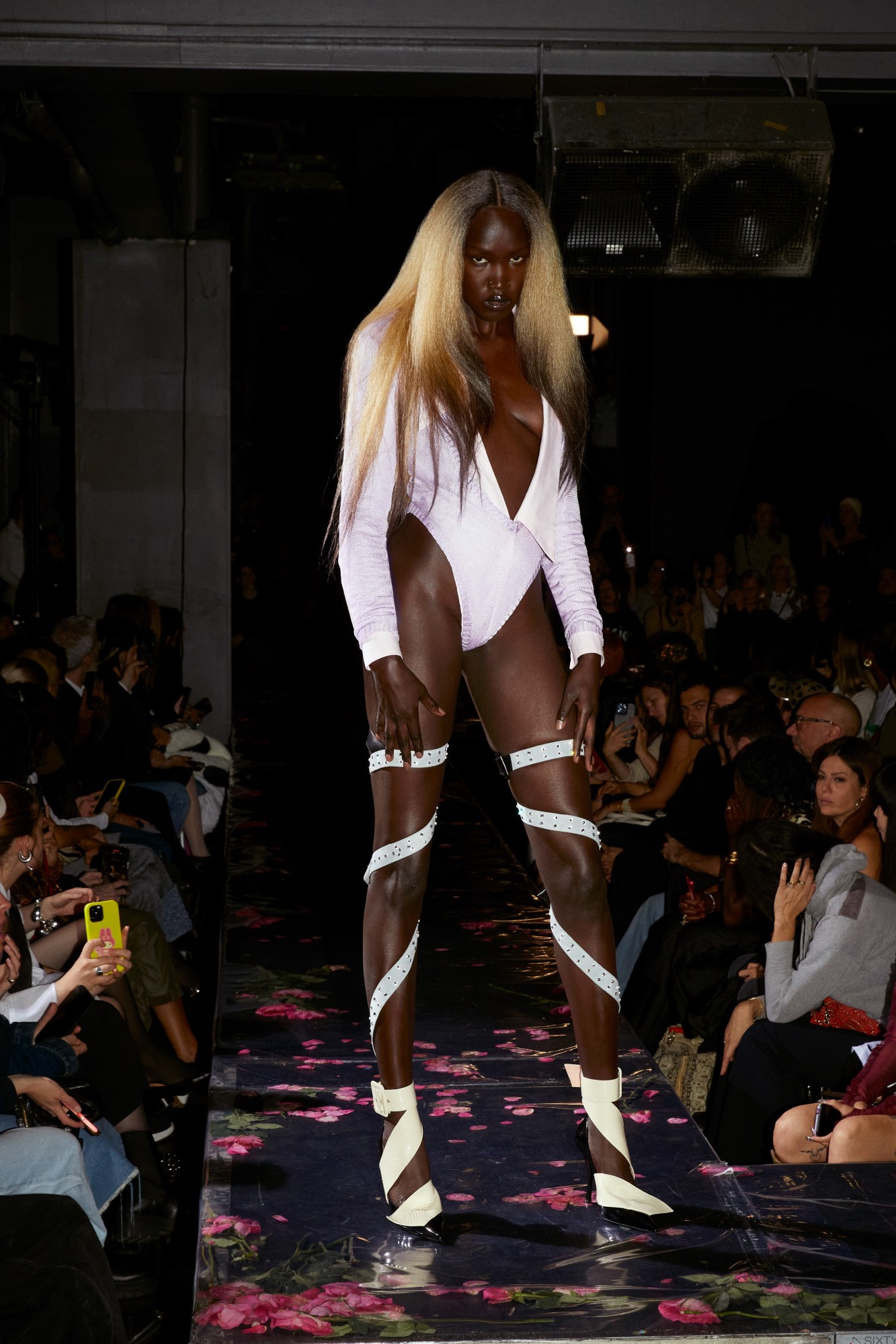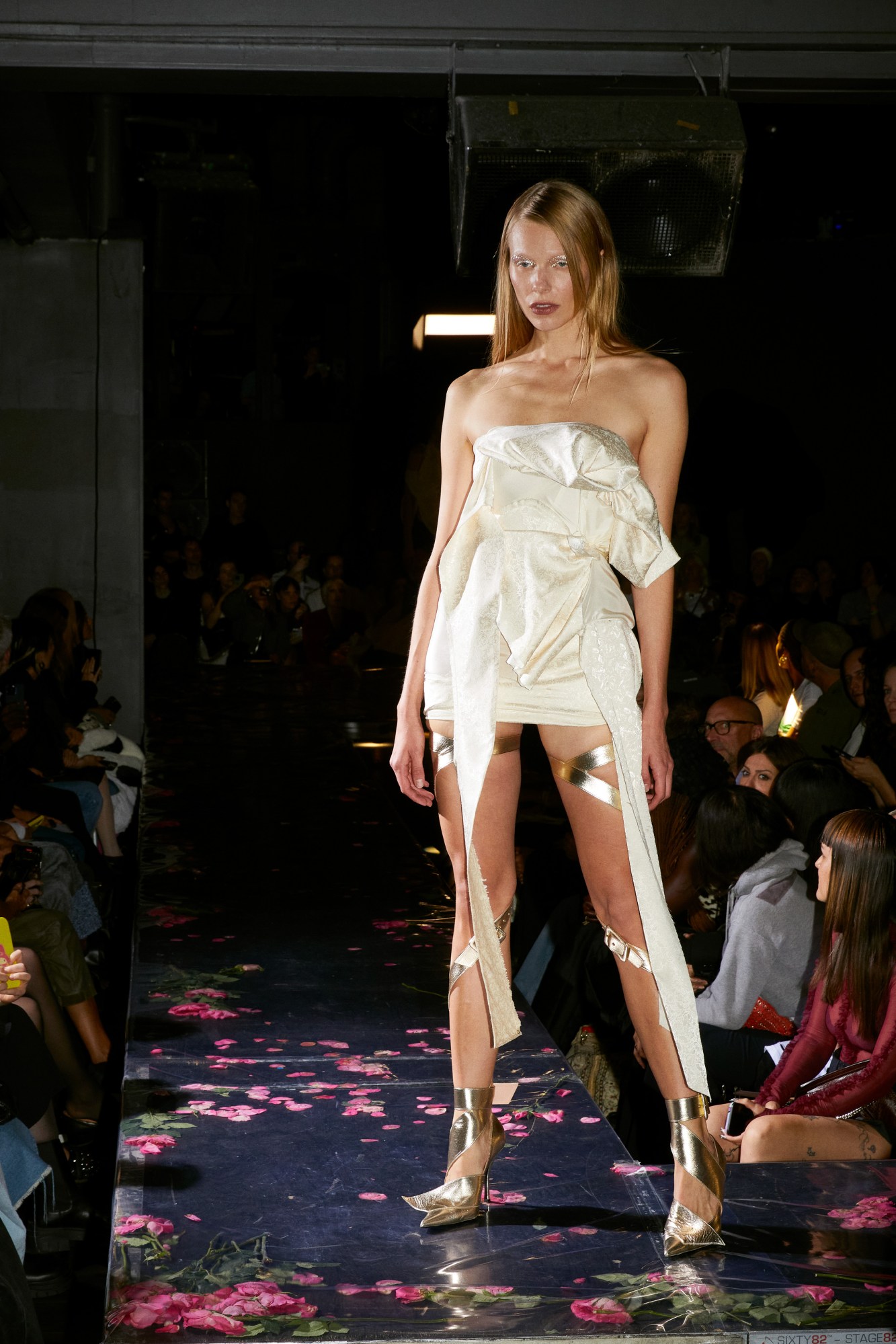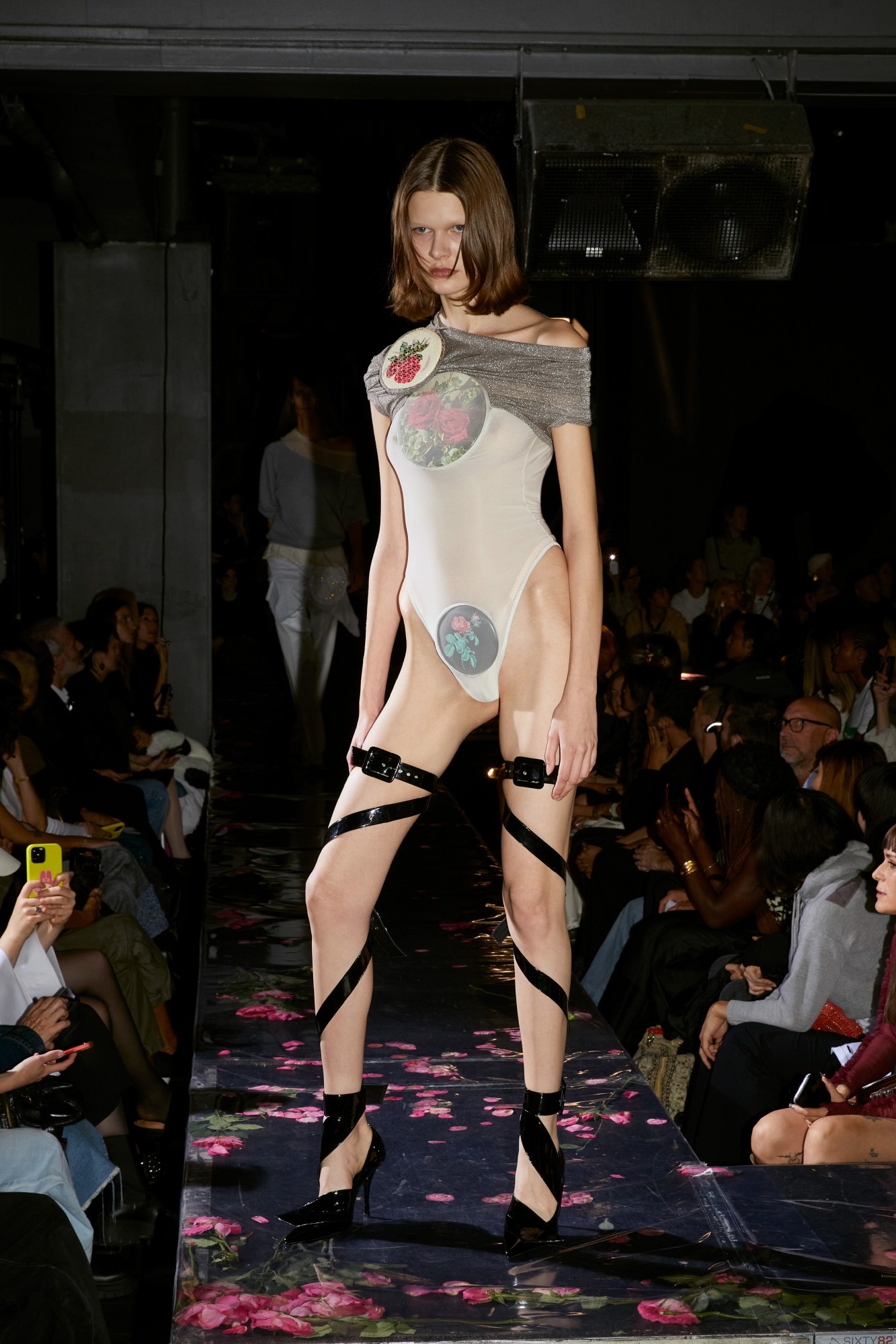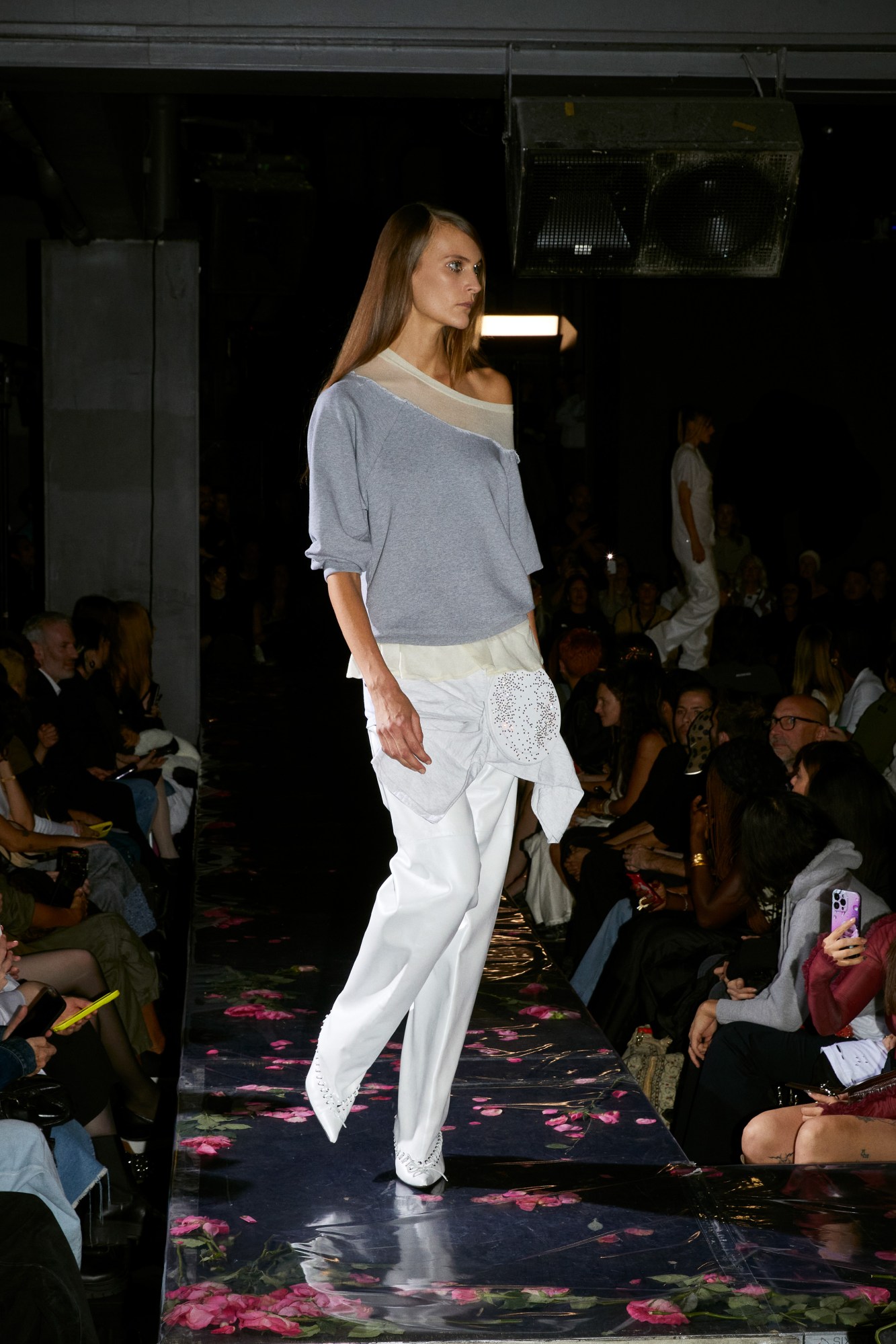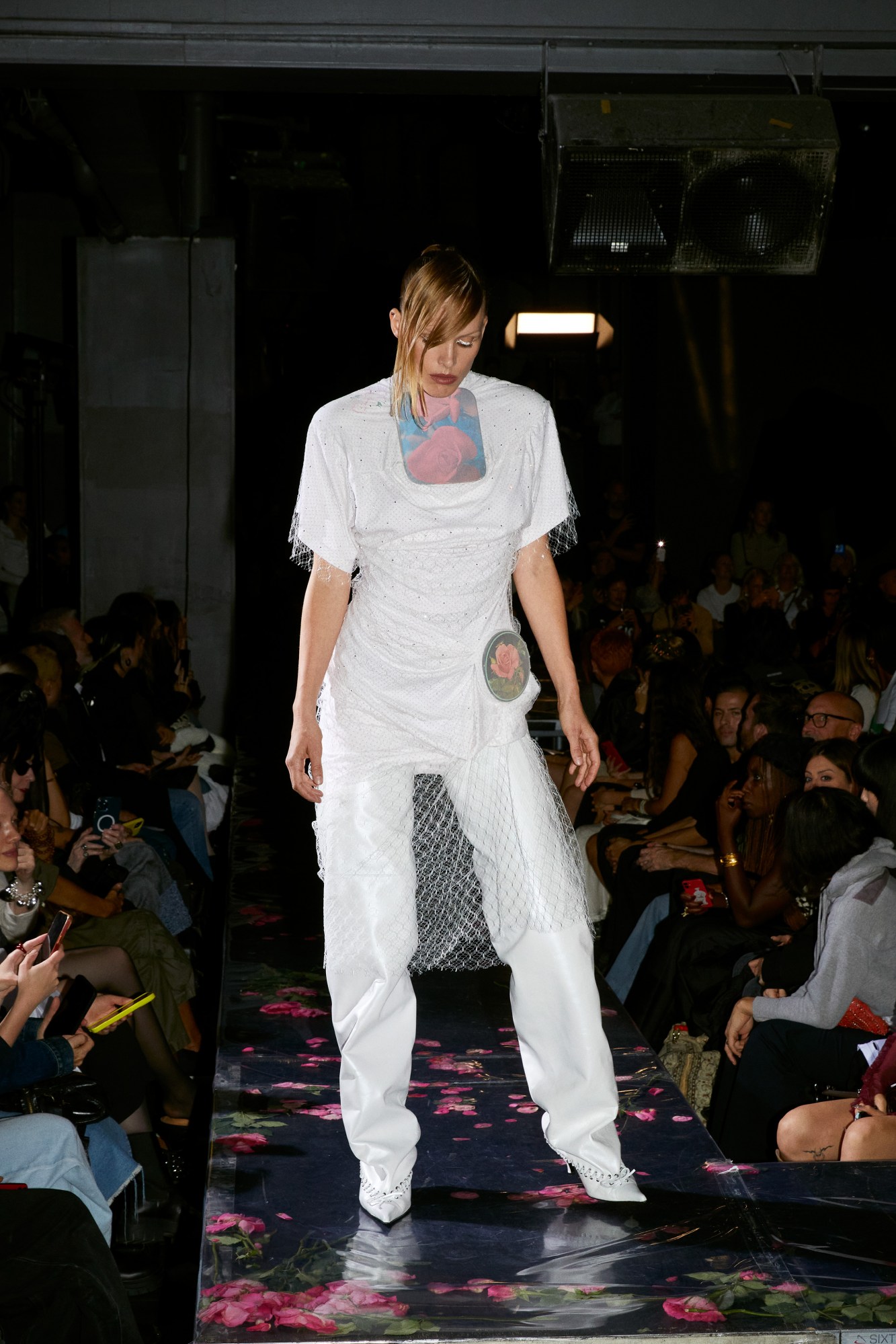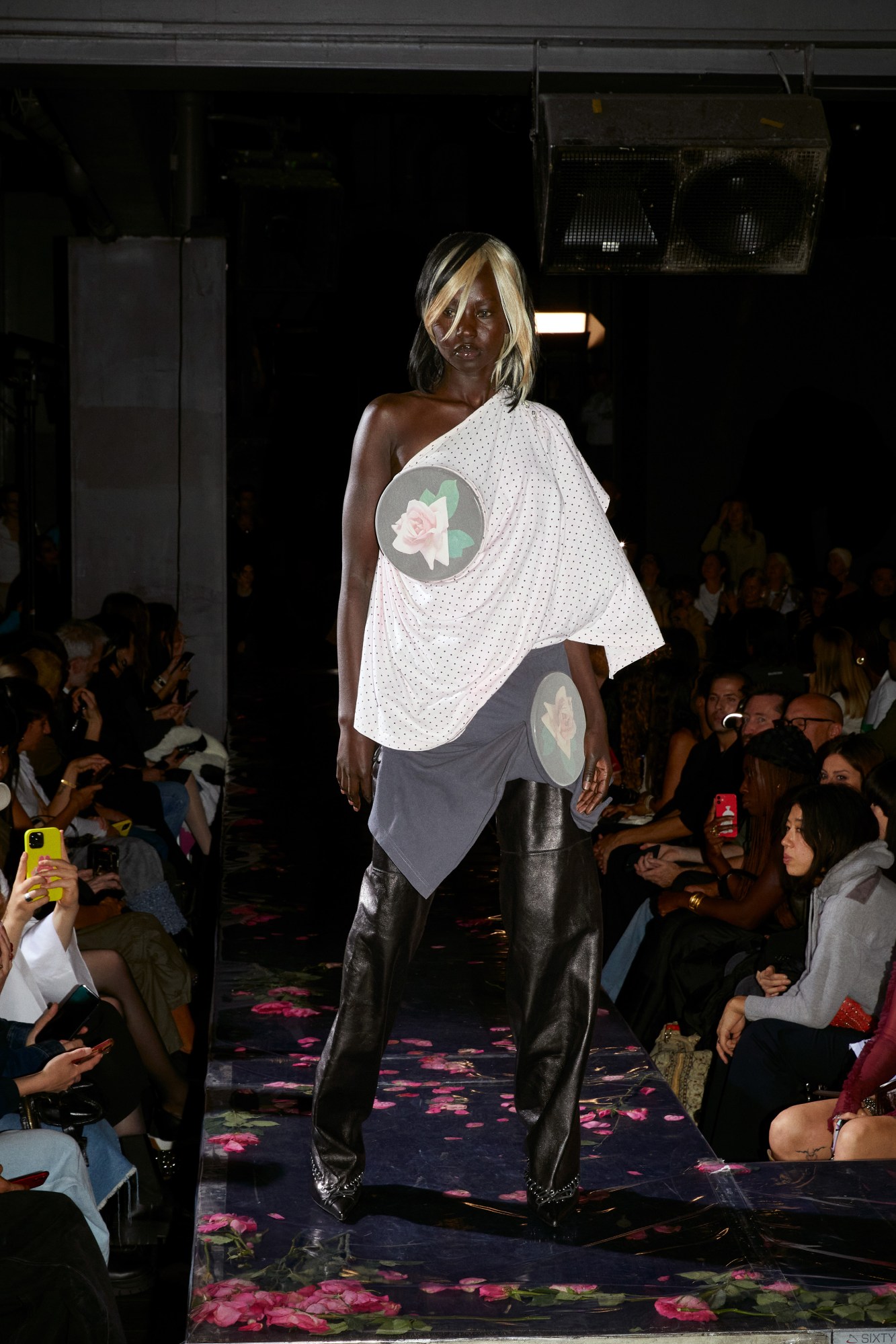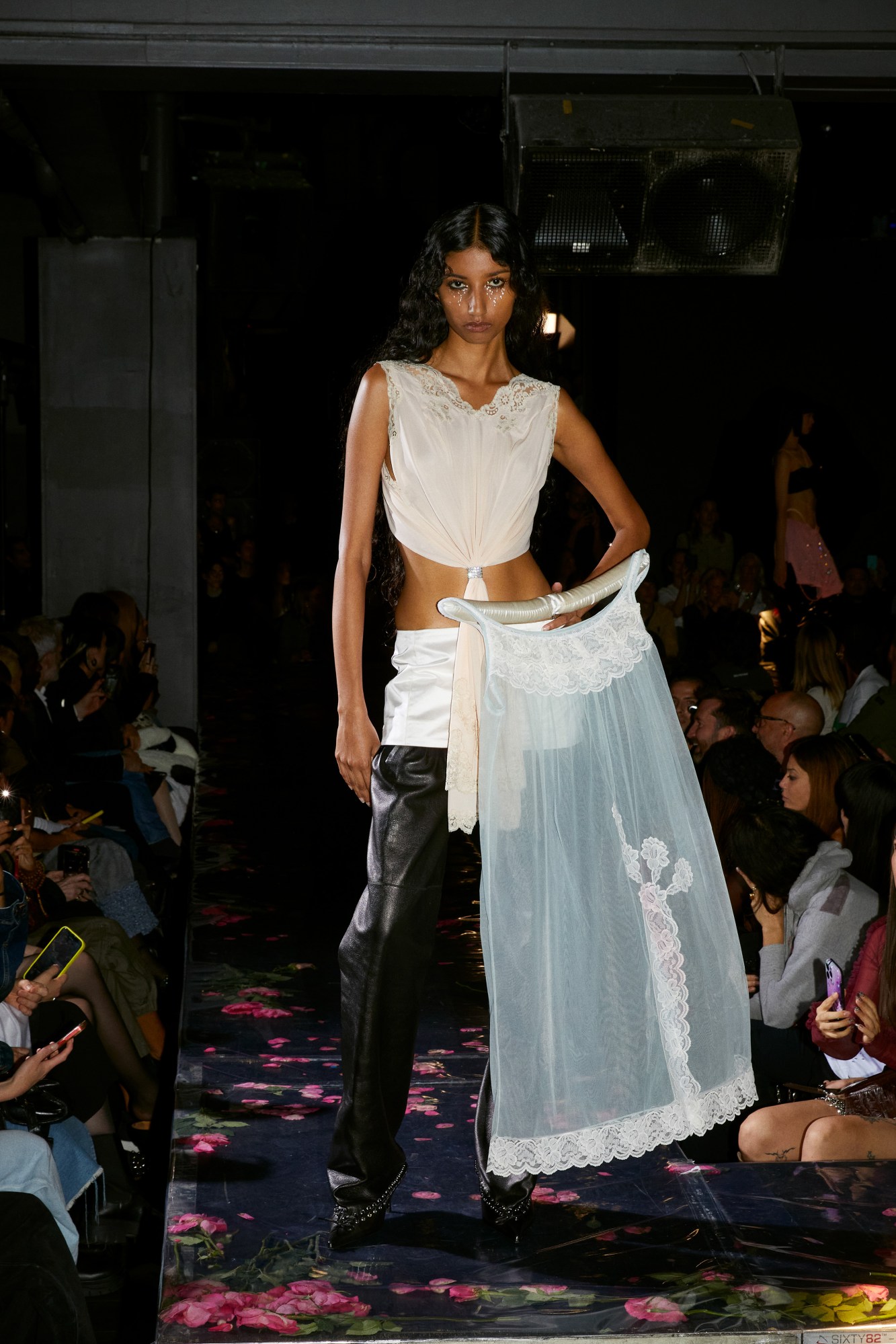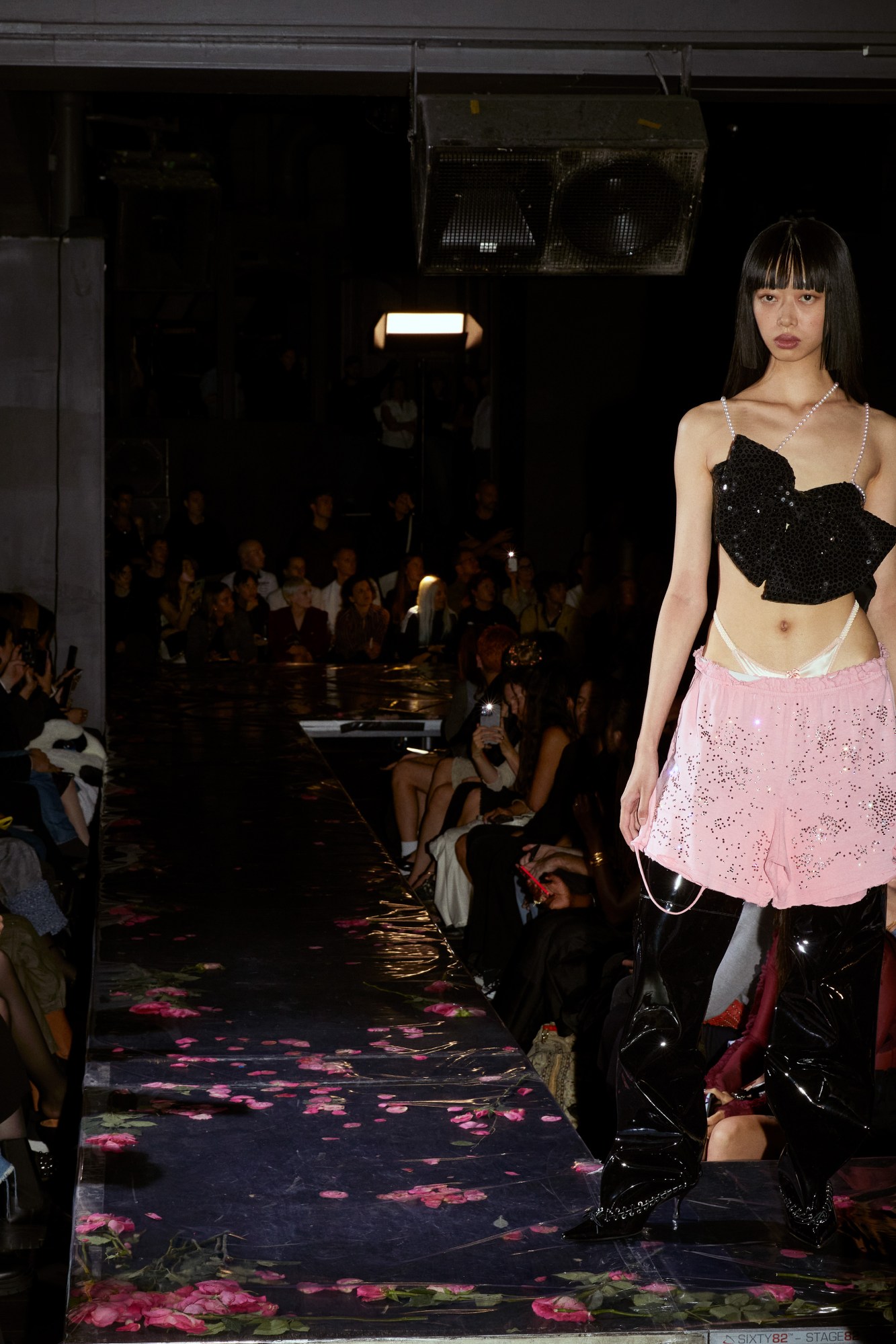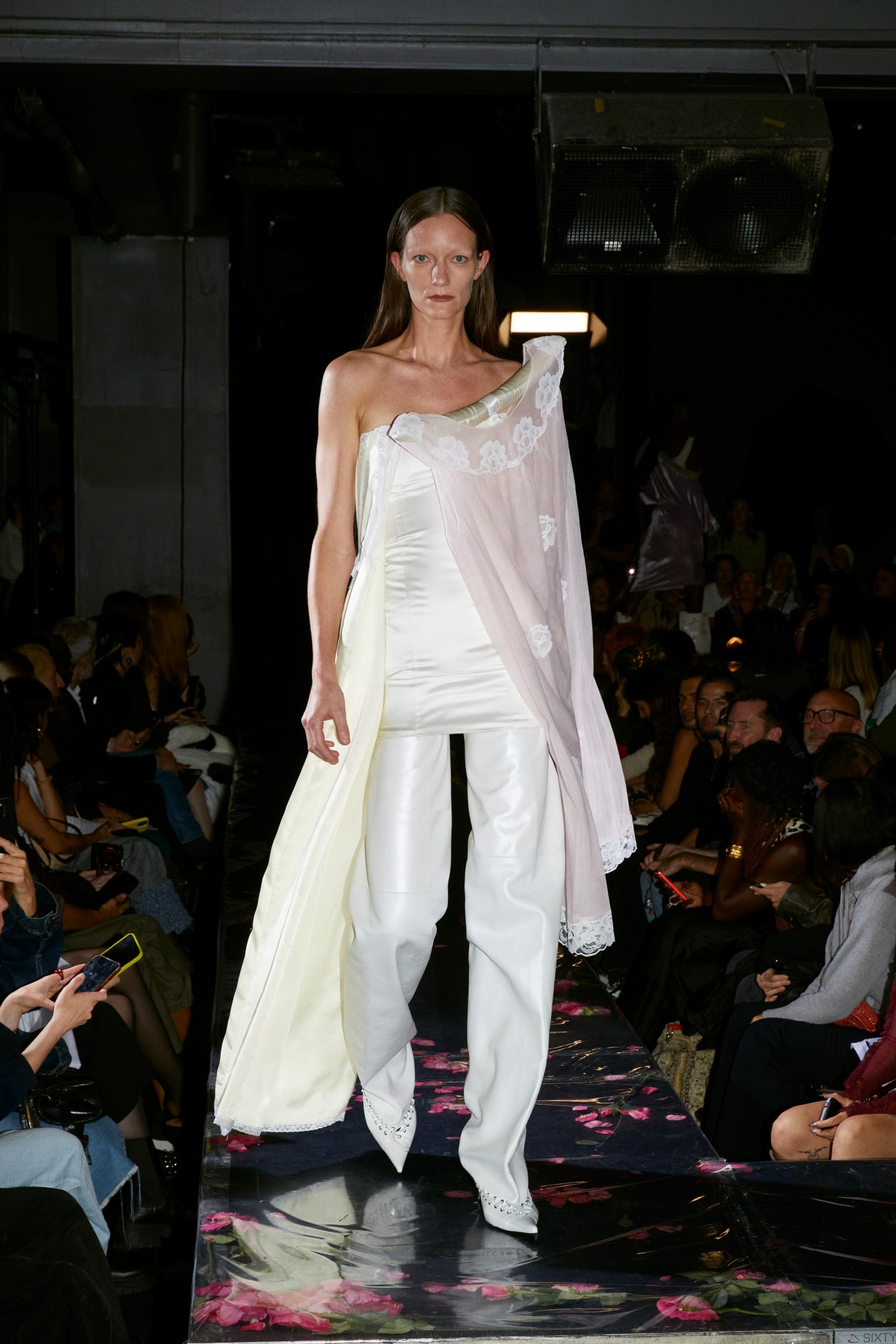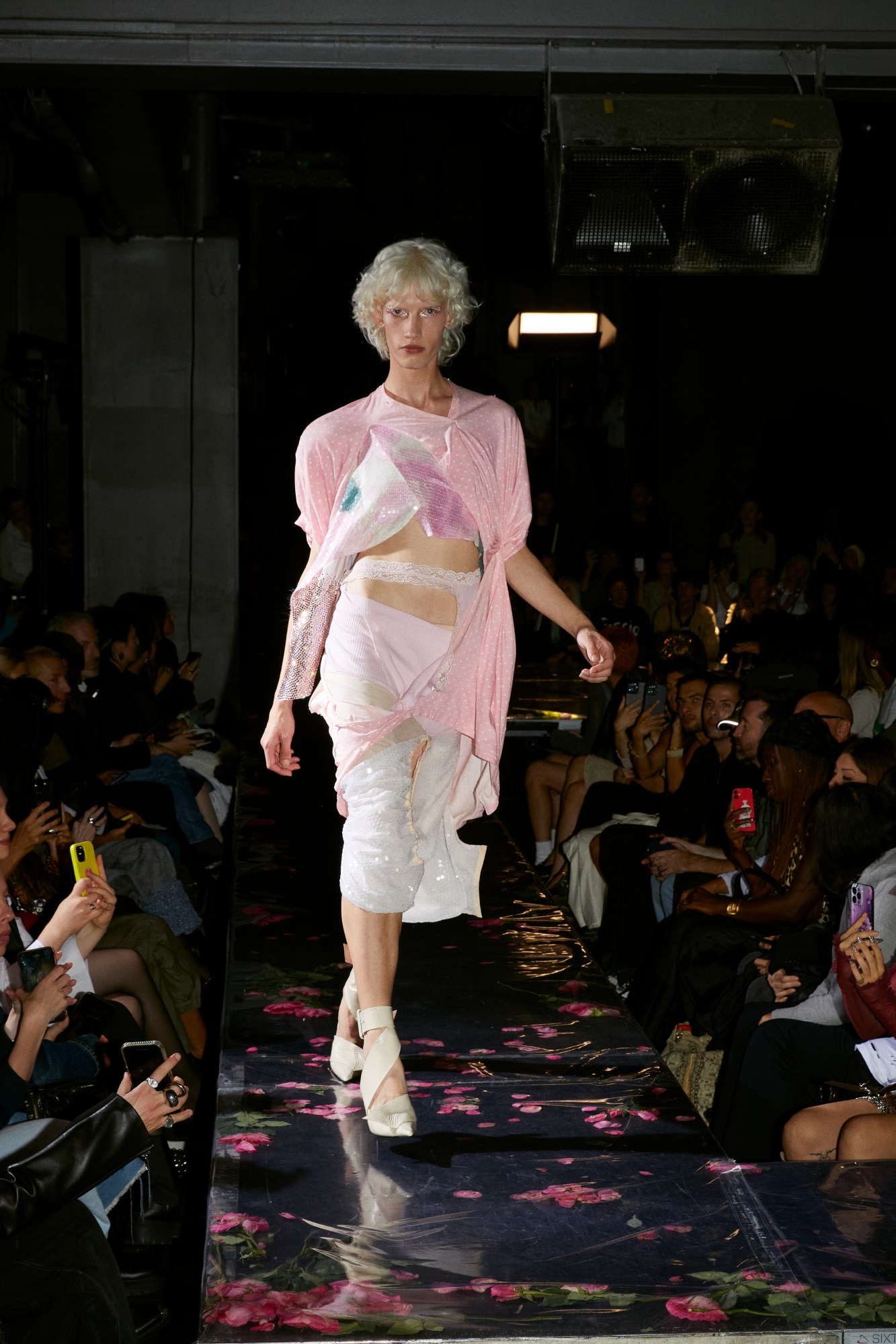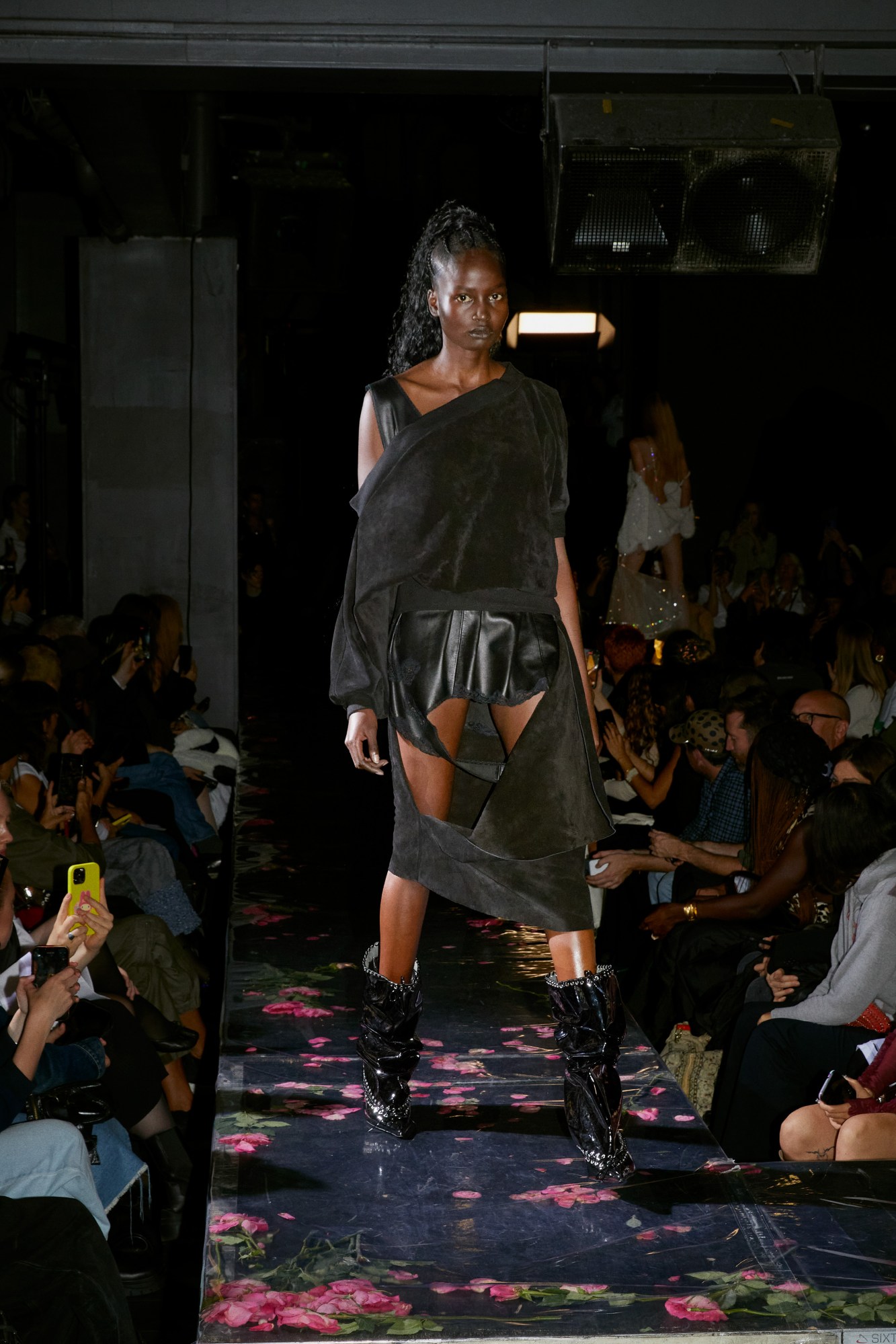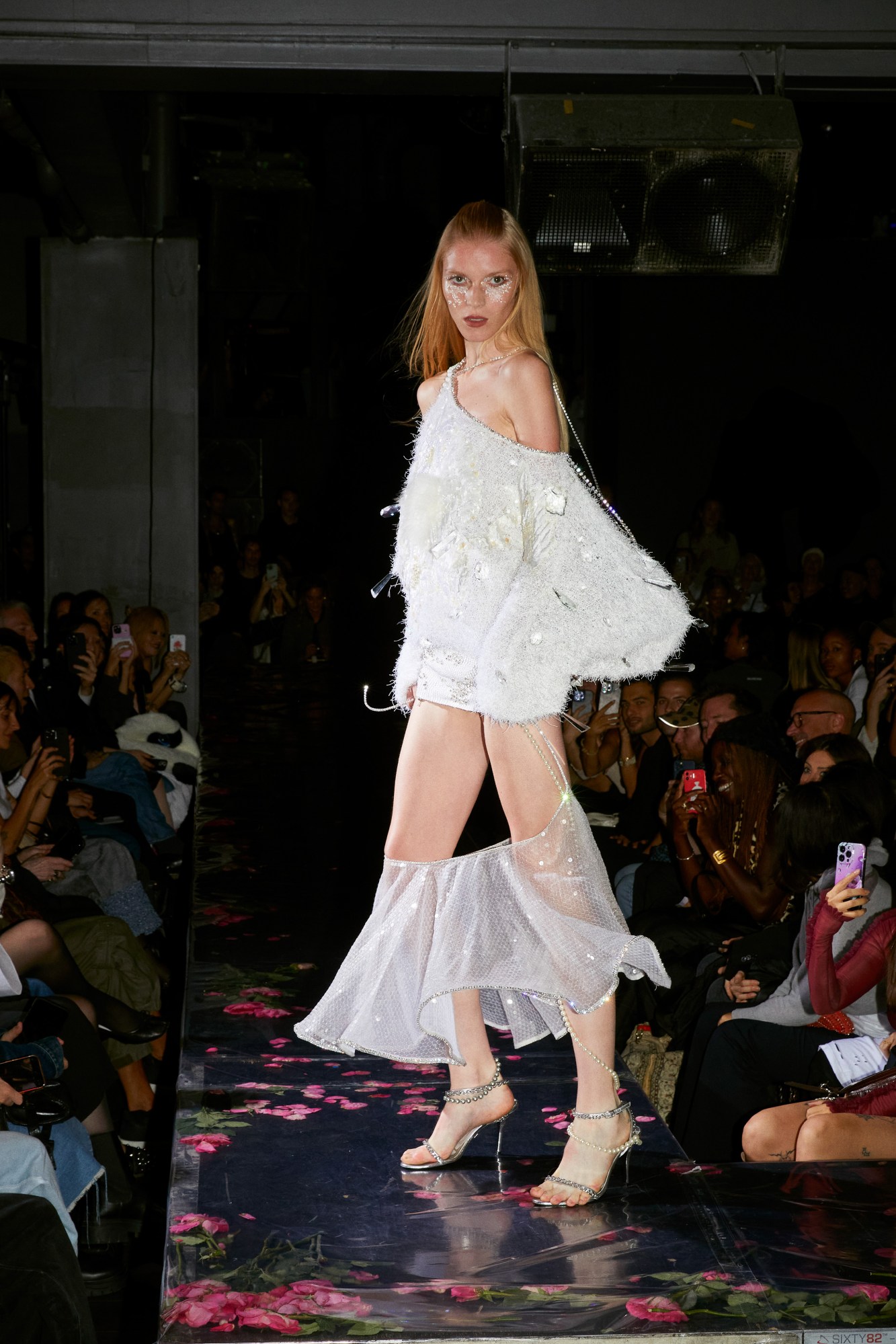Amidst the swelling nightmare of our climate crisis, upcycling has been voraciously coopted as a way to offset fashion’s very problematic consumption of resources — it’s now such a rudimentary principle of fashion design that it’s almost a rite of the runway for emerging designers to upcycle something in some way. But for Paris-based label All-In, headed by Benjamin Barron and Bror August Vestbø, upcycling is more than just a repurposing of textiles: it’s a clever, multifarious attitude towards design that pulls threads of inspiration from vintage garments while extolling thoughtfulness and patience – virtues often dangerously absent from fashion. “When you’re working with vintage clothing, you’re working with things that have been watered down to many different references,” explains Bror, “we don’t work with materials that we feel are already perfect, only things that we feel we can add a different type of narrative to.”
Presented during Paris Fashion Week SS24, All-In’s fourth collection marks the clearest declaration yet of the brand’s design principles. Whereas previous seasons meshed a litany of ideas within individual looks, Bror and Benjamin elaborated this collection around one coherent narrative: the story of Allina, a fictional one-hit-wonder pop star who’s had her 15 seconds of fame and is on the way out. Her allotted 15 seconds of stardom — and not 15 minutes as posited by Andy Warhol — correlates with the latest issue of All-In’s publication entitled Fast Fashion (the brand first started in the editorial space). “It’s inspired by the speed of fashion and also our experience entering the world of fashion,” says Benjamin. “Last season was the first season we really worked on commercial pieces, and we had to learn to do a lot of things very quickly.”
So how does a fading pop star dress? In “façade forward” fashion, of course – designs that are “full in the front and empty in the back” like backless knitwear, bras stitched into crop-tops, and racy sequined tops held together by strings of faux-pearls. Of particular note are a slinky top and skirt, theatrically adorned with rose-motif biscuit tin lids as sort of larger-than-life pendants. “We were looking at John Chamberlain sculptures a lot,” says Benjamin of their magpie-like sartorial assemblages, “how something can look so perfectly compressed.”
The show, which took place in a club located in the bowels of the Tour Montparnasse — “the kind of concert venue where you’d play at the end of your career” — was styled by Lotta Volkova so that each model was a version of Allina. The first two looks are representative of her 15 seconds of fame, but then she begins to fall apart. More and more layers are added to hide the cracks in her façade until, eventually, it all unravels, sags, splits at the seams. “She layers on stuff rather than stopping, letting go of the dream,” laughs Bror. “It just gets more and more crazy. You’re layering on while a part of you is just falling apart.”
All-In’s first collections consisted predominately of one-off upcycled designs but, as of last season, they’ve become acutely aware of the need to produce commercially viable pieces to sustain the brand. “We’re working with new materials and factories to translate our concepts into pieces that can actually be reproduced,” explains Bror, “There was something about our practice in the past that was not accessible to people.” That being said, each design inspiration here is still rooted in vintage garments—“that’s when we feel like we have the best ideas. When we work with existing clothing first.” For example, a layered top was designed by first deconstructing two vintage tank tops and a t-shirt, and then sewing the pieces together in a novel form. Shoes also continue to be an important way to step All-In out into the ready-to-world, with this collection featuring an edgy pump based on a prototype made from six vintage belts, as well as reiterations of styles from previous seasons.
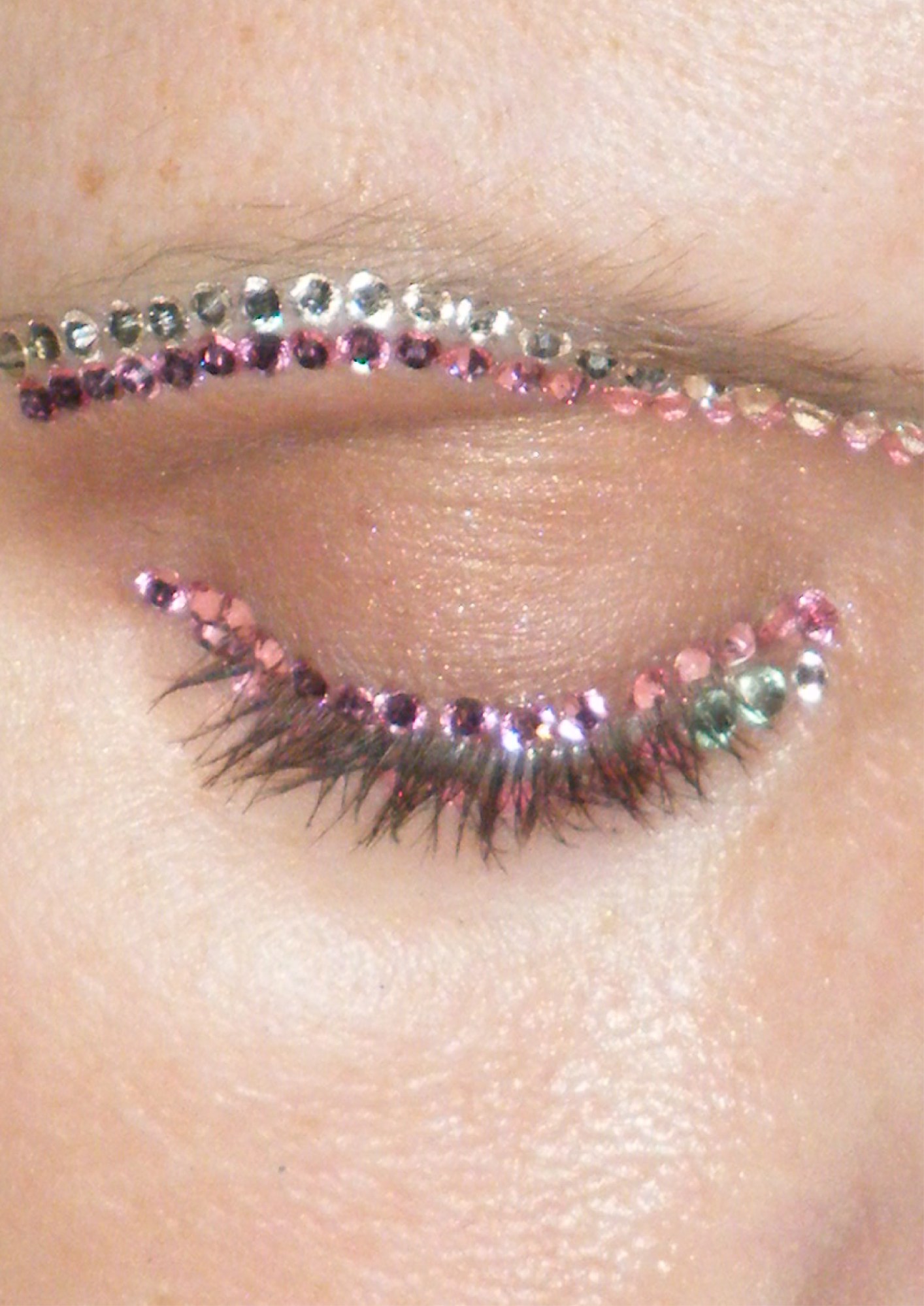
The designers are adamant that they want to continue with just one collection a year — it affords them time to process the past season and then begin again with a clean slate. As they venture increasingly into producible pieces, this allows them to consider what the world really needs. “I feel like the biggest issue in terms of sustainability is thoughtlessness with producing and creating more desire,” says Bror. “It doesn’t make sense to release garments that already exist. It also doesn’t make any sense that you’re meant to be sick of something within half a year.”
And perhaps this is the most important tenet of All-In’s design method: by upcycling materials, narratives, and techniques, they work to preserve, if not build, the value of their designs – which goes starkly against the industry’s general impulse to slash the value of something once it hits the shop floor. Unlike poor Allina’s short-lived music career, All-In’s latest collection proves that their methods and designs are here to stand the test of time.
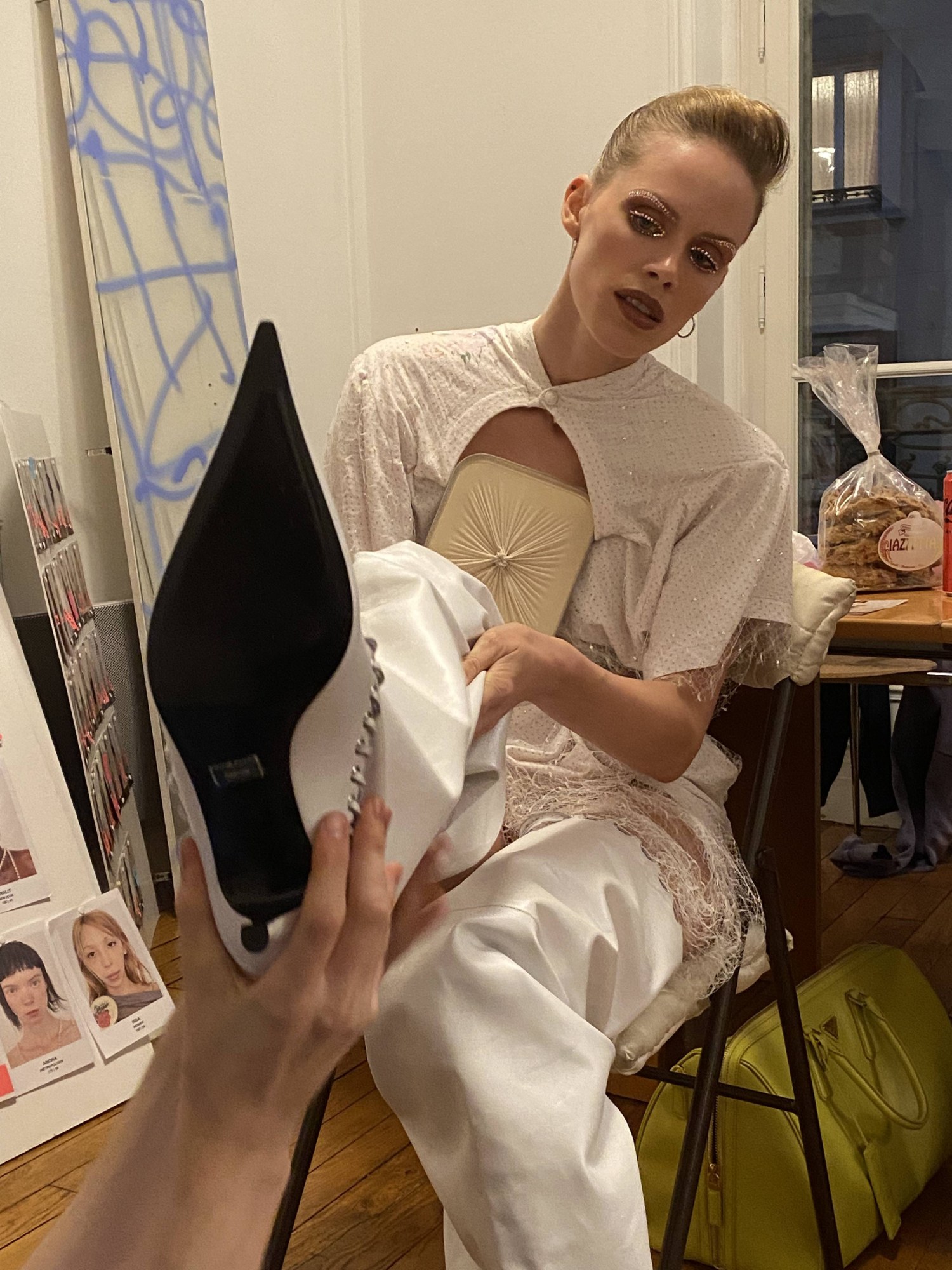

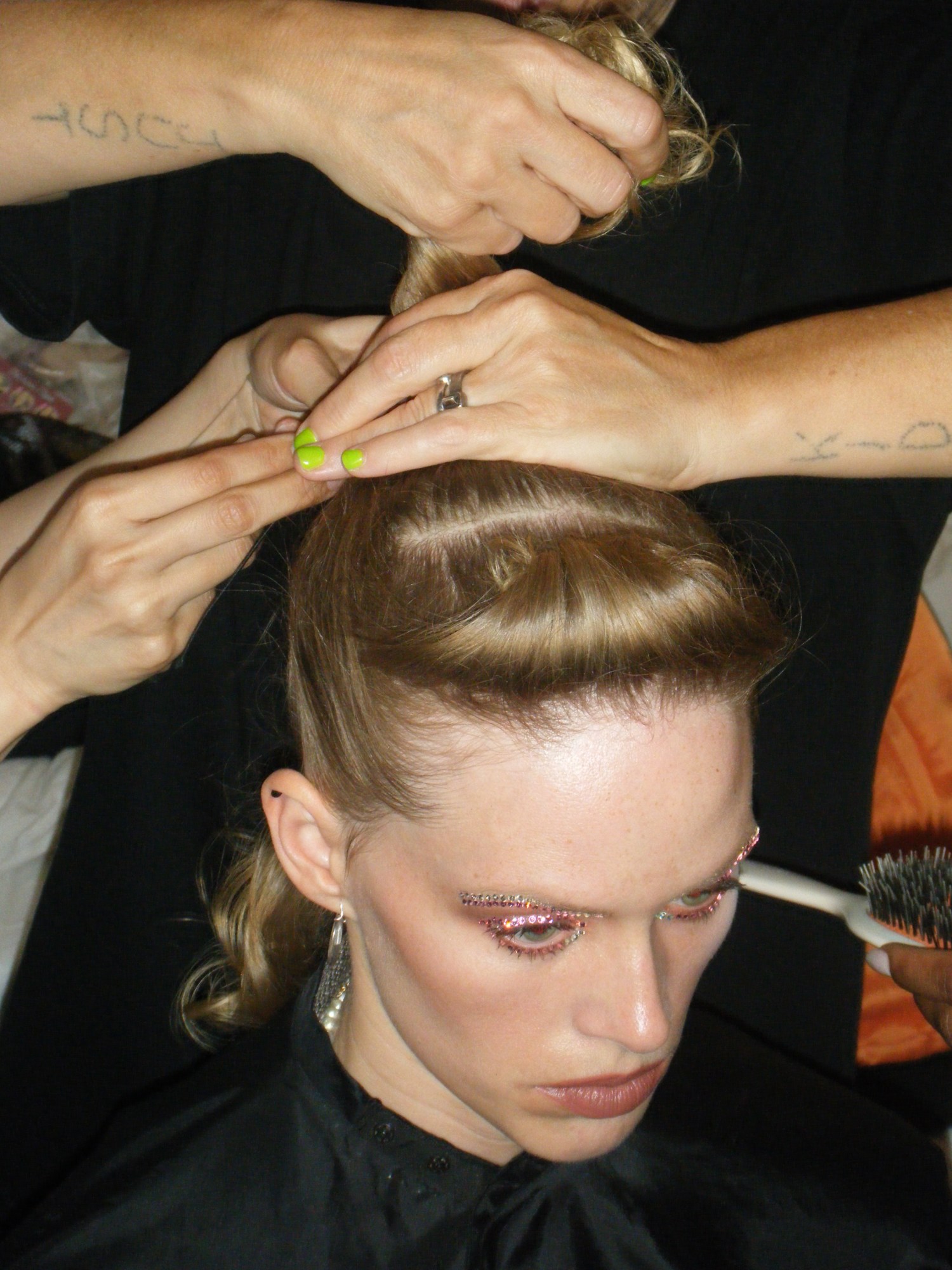
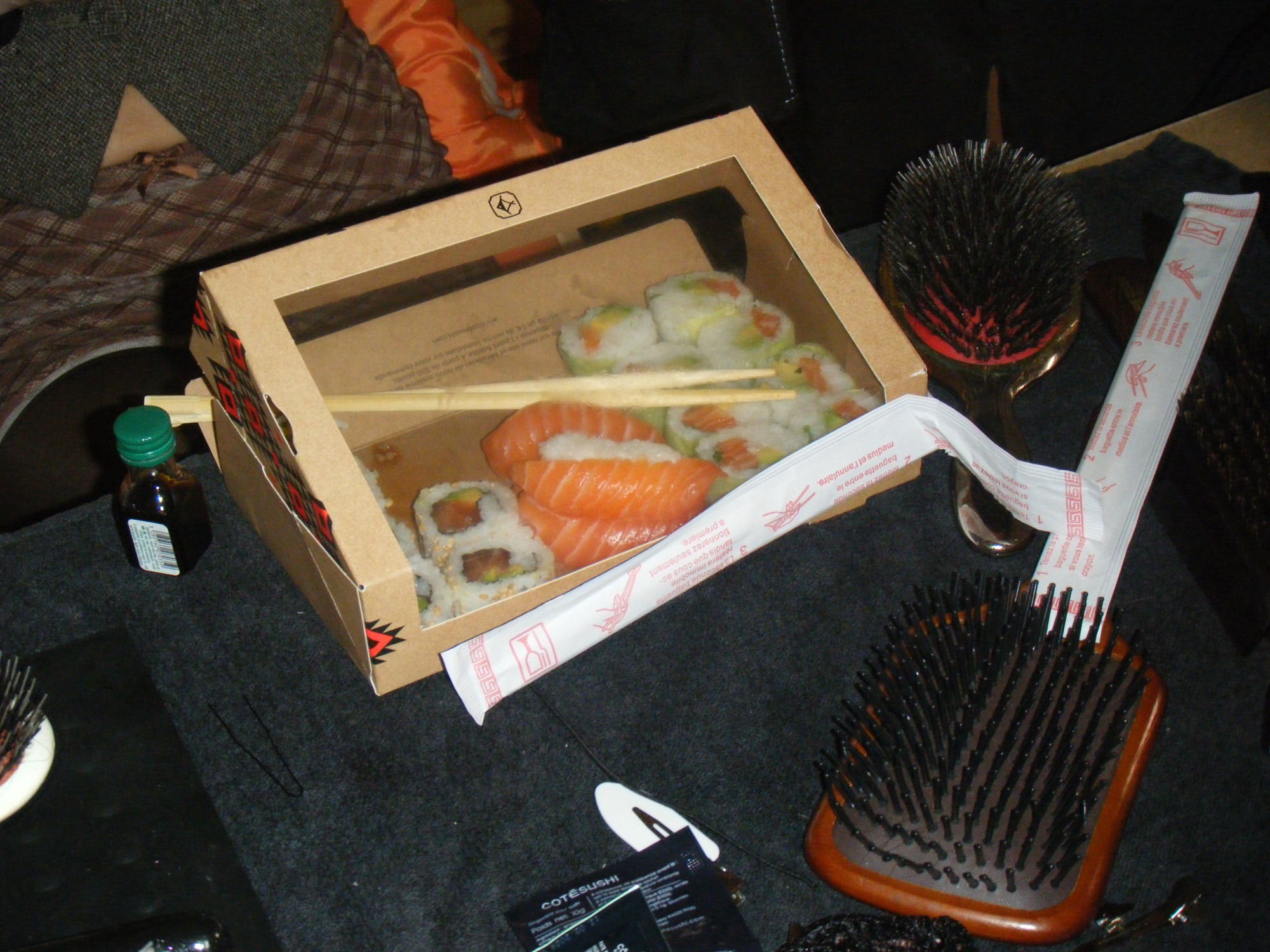
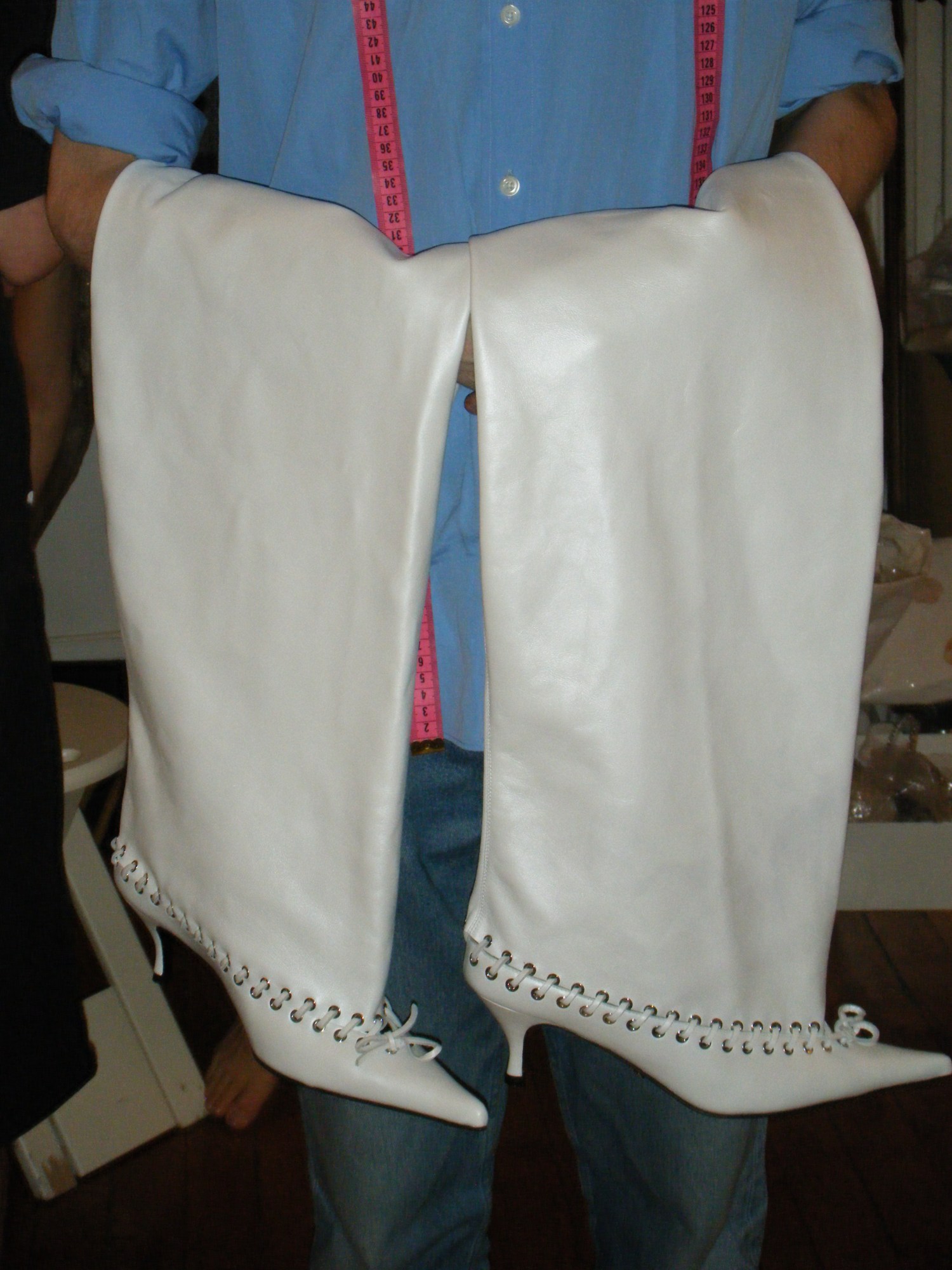
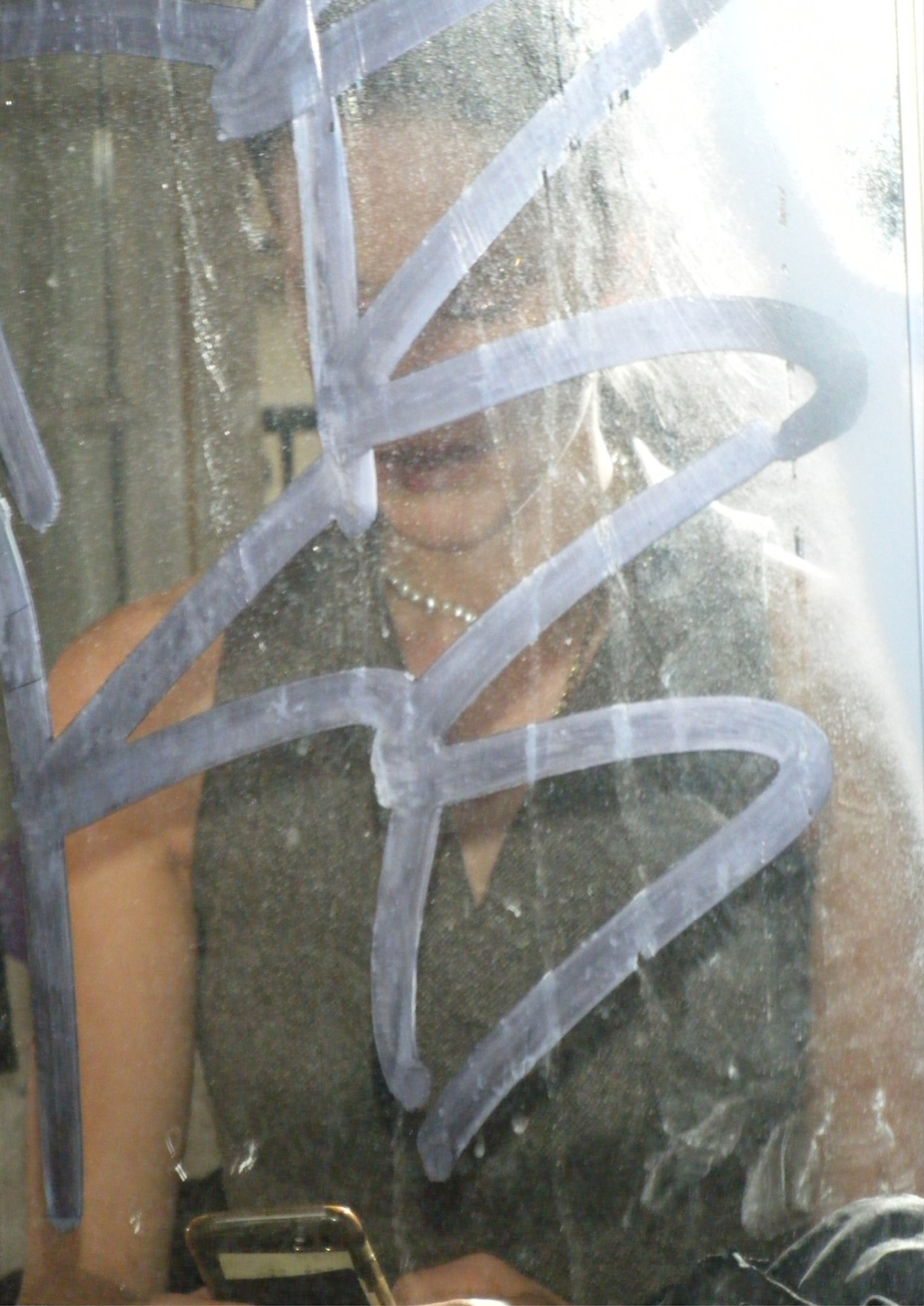
Credits
Photography Cristina Stolhe, unless otherwise credited
